Philips PUS8359 in 50" is a fairly simple television, yet sufficiently advanced for a large portion of consumers. Its biggest distinguishing feature (as well as the entire brand) is the Ambilight backlighting, which at this price point is definitely an added value and something that may encourage a purchase. In this price range, it's hard to find anything that will give us flawless picture quality, although we can look for units that offer something more. And in our opinion, this tested television is precisely that. In this context, we pay particular attention to the quality of tonal transitions, colour reproduction after calibration, and the television's performance when connected to a computer. Thanks to its low input lag, a casual gaming session will be quite enjoyable. However, we must also point out the unit's drawbacks. Without a doubt, these will be low luminance in HDR content and narrow coverage of the DCI-P3 colour space. Although it’s worth noting that the dynamic tone mapping feature works very effectively. We will also briefly mention the contrast and black levels, which, while not exceptional, are definitely better than in units based on IPS/ADS panels. The operating system of the television can be considered one of the better ones, although it is in development and lacks many features, which we will discuss more in a dedicated paragraph. It also does not have as wide a library of applications as its competitors, although this will likely change soon. Who is the PUS8359 for? One could say it’s for anyone looking for a balance between quality and price.
- Matching (Score)
- Our verdict
- TV appearance
- Where to buy
- Contrast and black detail
- HDR effect quality
- Factory color reproduction
- Color reproduction after calibration
- Smoothness of tonal transitions
- Image scaling and smoothness of tonal transitions
- Blur and motion smoothness
- Console compatibility and gaming features
- Input lag
- Compatibility with PC
- Viewing angles
- TV efficiency during daytime
- Details about the matrix
- TV features
- Apps
- Playing files from USB
- Sound
Philips PUS8359 (VA) vs Philips PUS8500
Direct compare
PUS8349 / PUS8359
PUS8500 / PUS8560 / PUS8510 / PUS8600
Available screen sizes: 50”

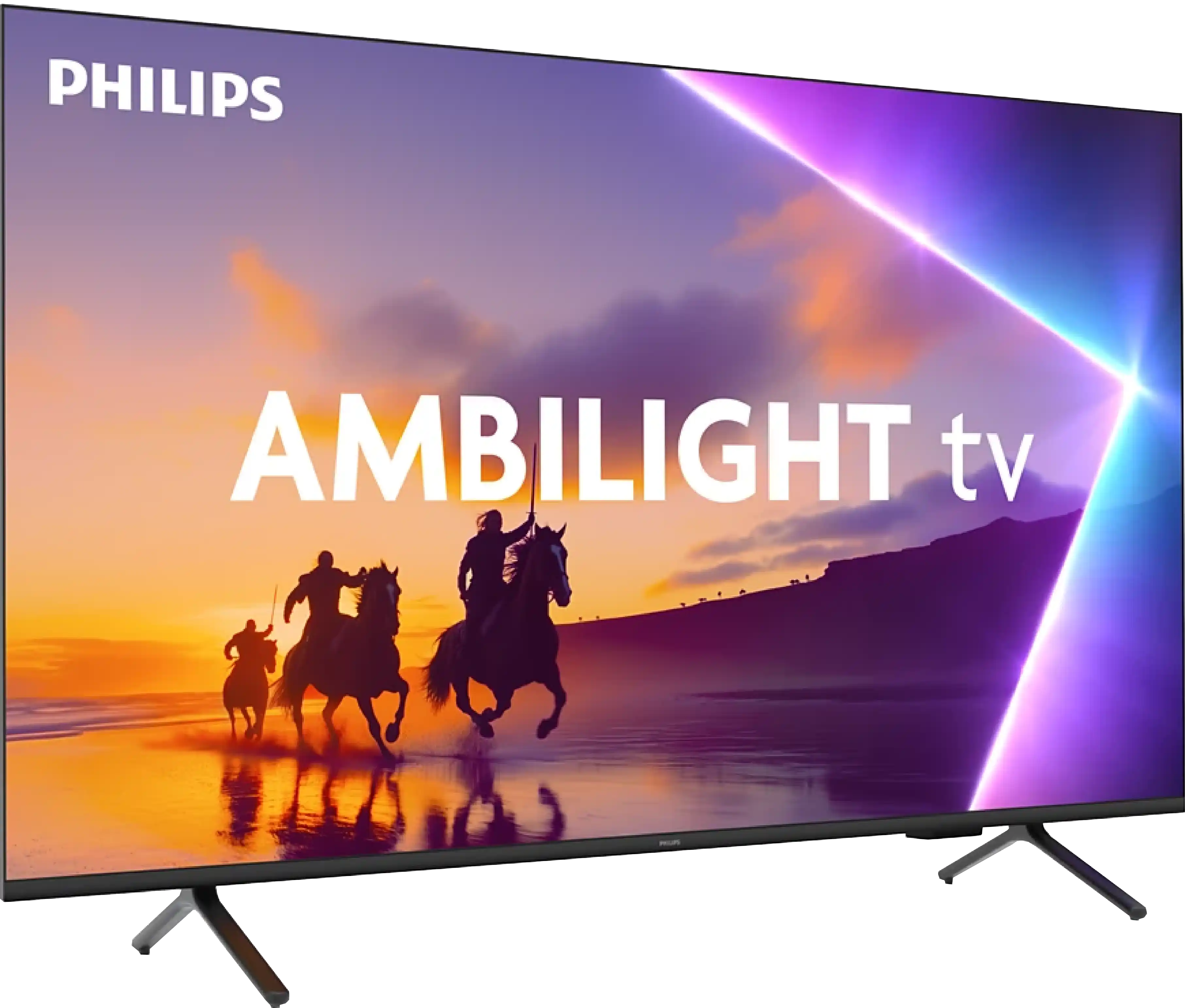
Panel type: LCD VA
Resolution: 3840x2160
System: Titan OS
Model year: 2024
Complete the survey to find out the result

Panel type: LCD VA
Resolution: 3840x2160
System: Titan OS
Model year: 2025
Complete the survey to find out the result

Overall rating
5.4
5.6
Movies and series in UHD quality
5.0
5.4
Classic TV, YouTube
5.4
6.1
Sports broadcasts (TV and apps)
4.5
5.2
Gaming on console
6.4
6.7
TV as a computer monitor
6.0
5.6
Watching in bright light
4.7
4.9
Utility functions
5.7
4.9
Apps
6.2
4.6
Sound quality
6.1
6.2
Complete the survey to find out what fits your preferences
Advantages
Colour representation after calibration
Dynamic tone mapping function - recovers details that are too bright for the television
Smooth tonal transitions
Very good compatibility with computers and consoles - low input lag, chroma 4:4:4
Ambilight System
High native contrast - VA panel
Low input lag
Essential features for gamers: ALLM and VRR
Full support for audio formats: Dolby Atmos and DTS
Backlit remote with numerical keypad
Disadvantages
Low brightness of HDR materials
Missing a significant number of essential applications
Poor viewing angles
Average panel brightness
The TitanOS system feels unfinished (some features don't work, gaps in applications)
Infrared remote control
Font readability issues (PC)
Our verdict
Ambilight because that's exactly where we need to start, it's the biggest reason to buy the PUS8500. The three-sided backlighting on the TV looks fantastic, especially in the evening. It creates atmosphere, masks contrast imperfections, and makes viewing simply more enjoyable. Even if the black isn’t perfect here, at high contrast the native VA panel is just good. On top of that, there’s really decent input lag and several gaming features like ALLM and VRR. Although there’s no HDMI 2.1 or 120Hz panel, casual gaming should be a pleasure. Especially since it plays responsively and without delays. Let’s add full support for audio formats – it includes both Dolby Atmos and DTS, so soundbar owners also have something to be happy about.
But let’s not kid ourselves – this is still a budget TV, and at times that’s quite obvious. Brightness is average – not so weak that you can't watch anything, but if you hit an exceptionally sunny day, watching under such conditions without blinds can be problematic. However, in our opinion, the biggest disappointment with the PUS8560 is the Titan OS operating system. Despite the fact that the system debuted some time ago, some things just didn’t work – for example, screen mirroring from a phone despite the manufacturer stating that this feature is present. There are fewer apps than the competition, and the system itself feels a bit clunky. Generally, it seems to do something already, but it clearly lacks refinement.
Of course, this isn’t a TV meant to compete with top models. But if someone is looking for something simple, with the cool atmosphere that the Ambilight system provides, it’s quite a fair proposition. You just need to know what to expect and accept the compromises, of which there are plenty here.
TV appearance




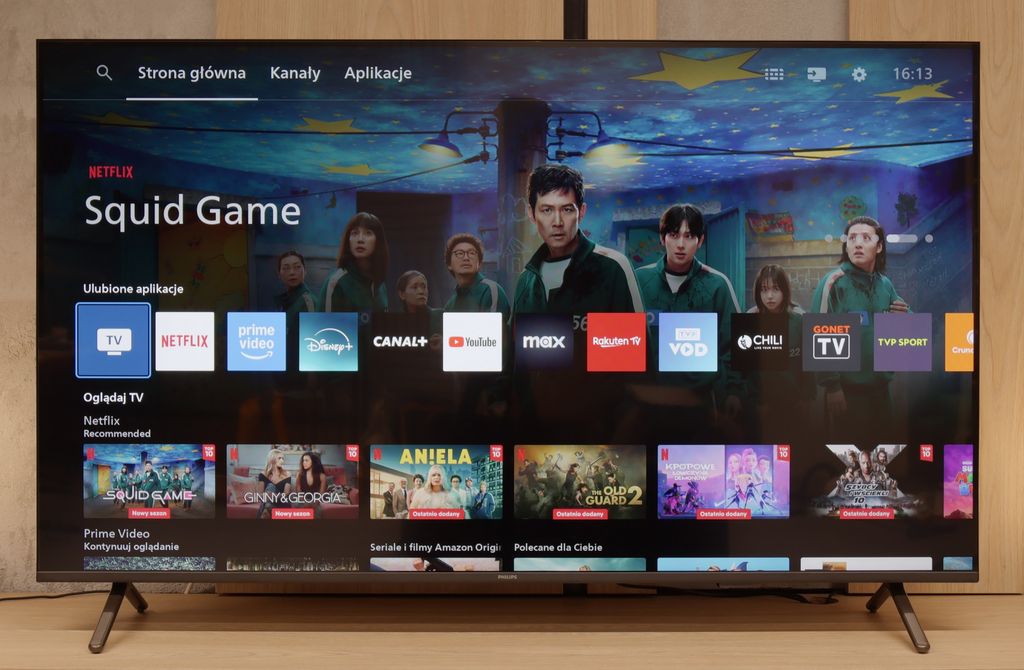
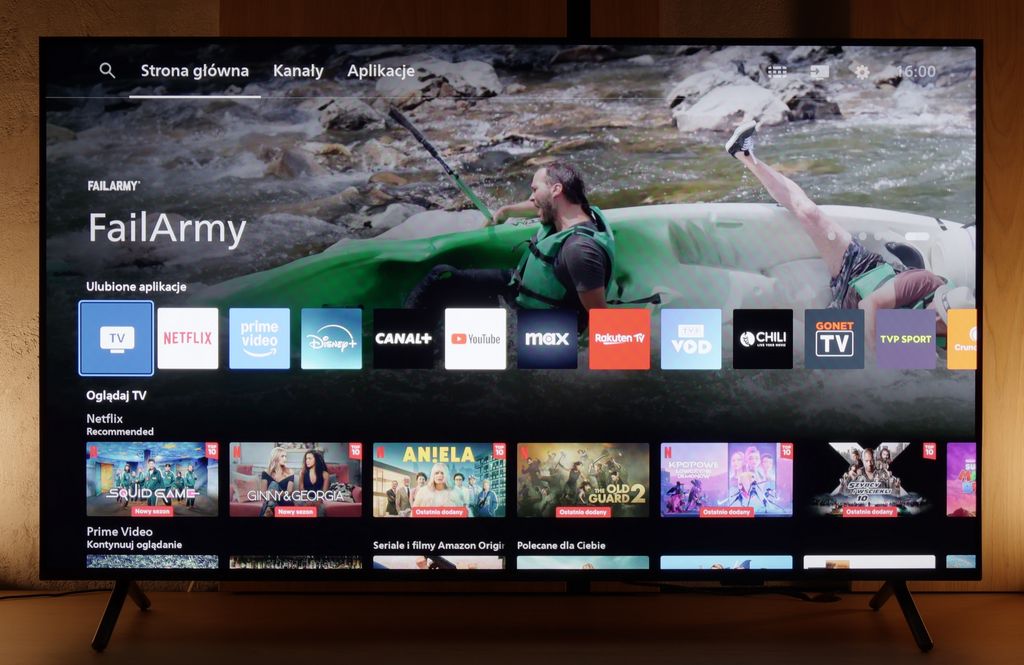
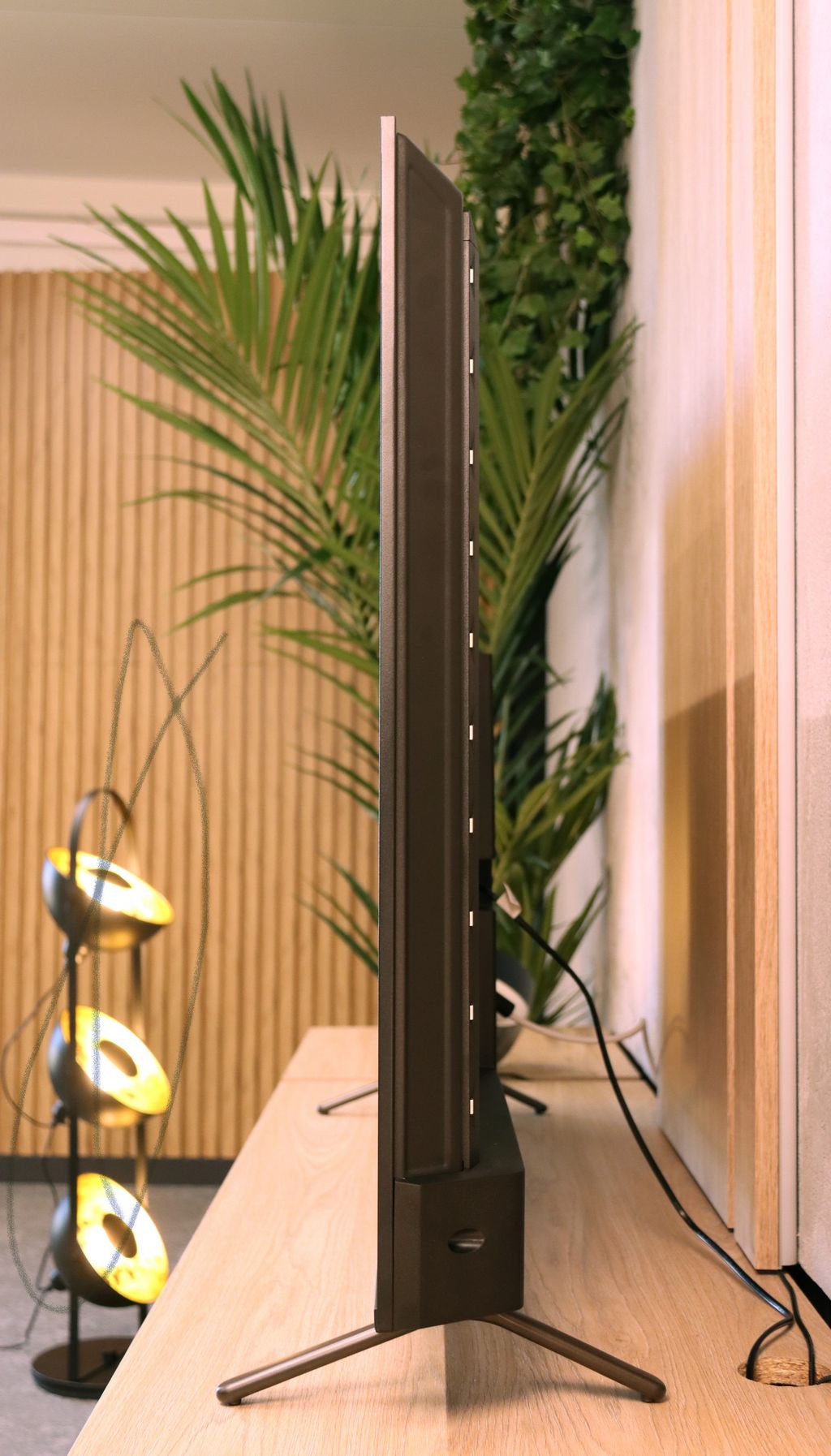
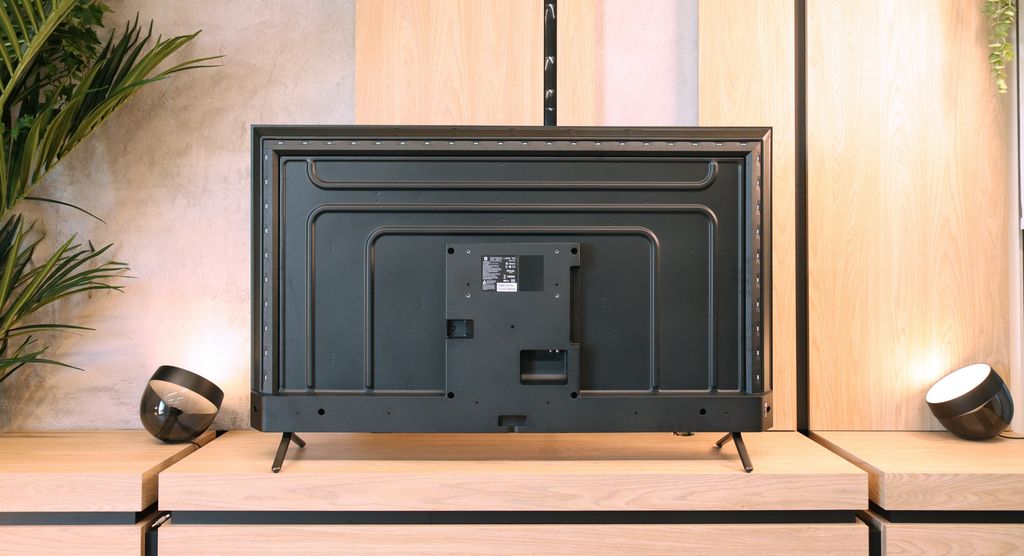
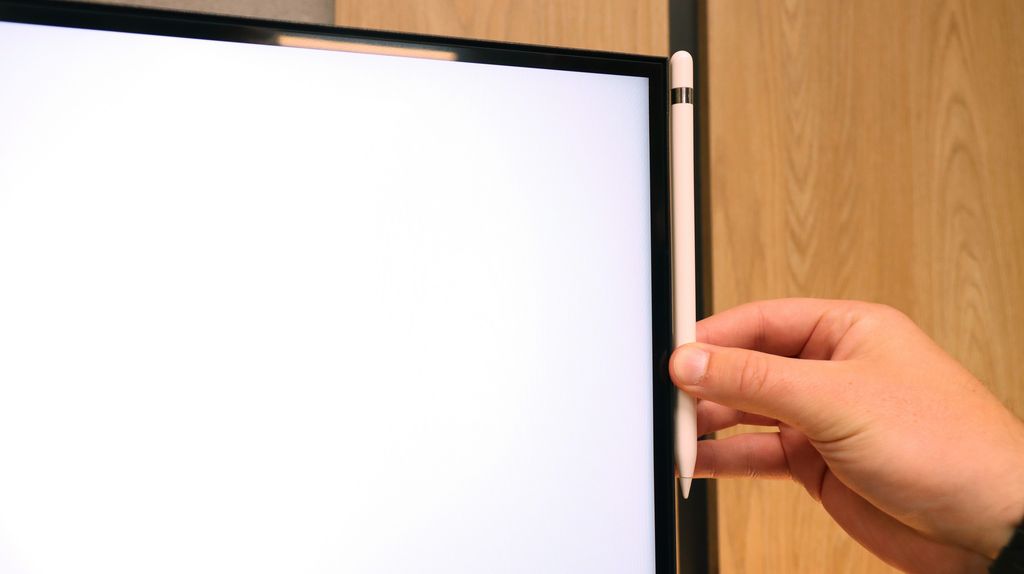
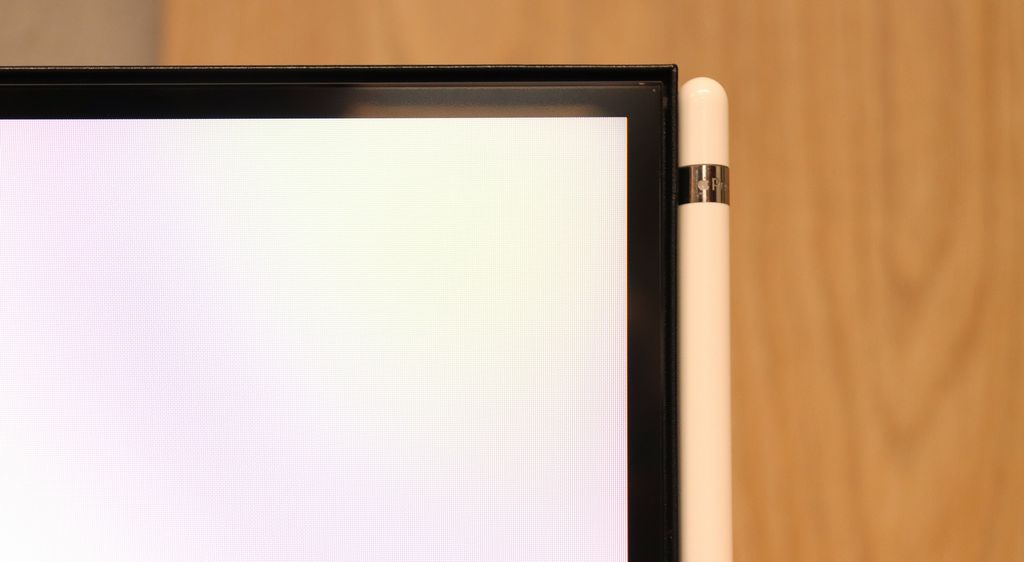

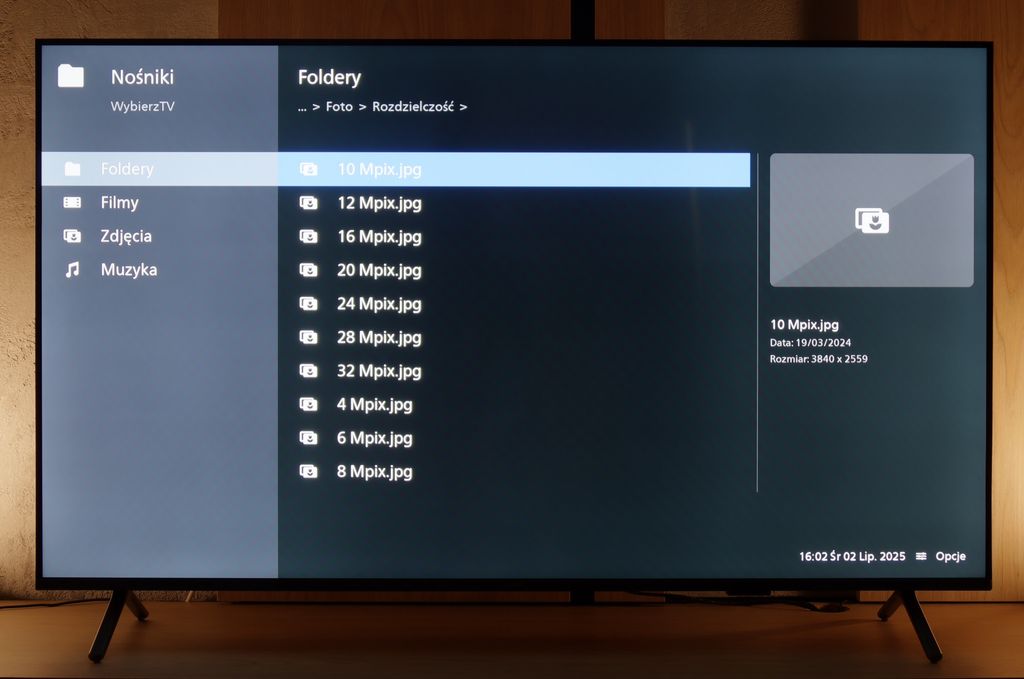
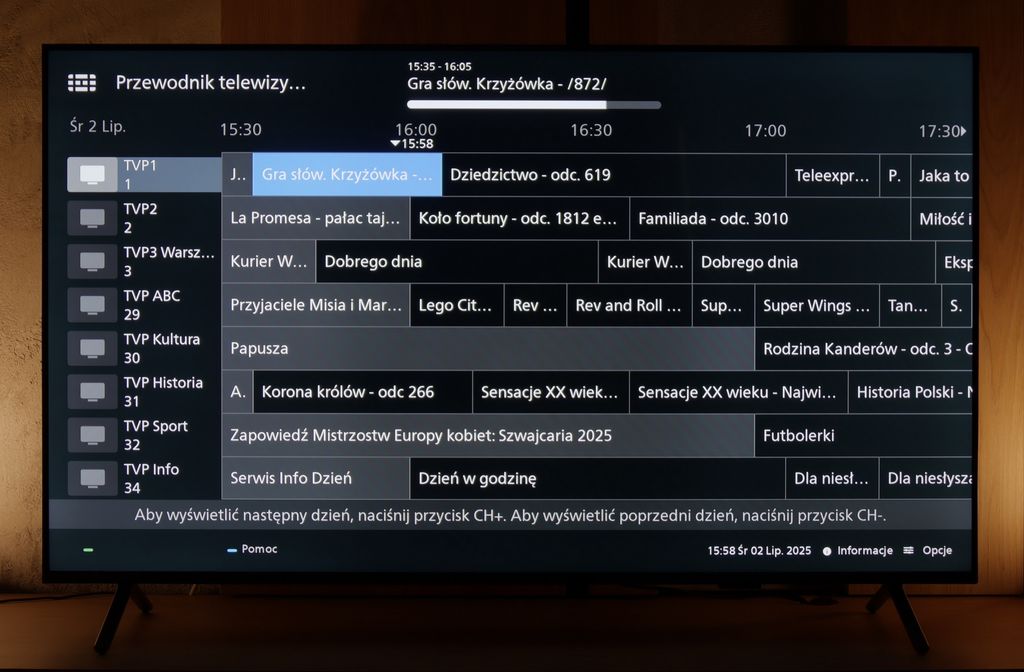
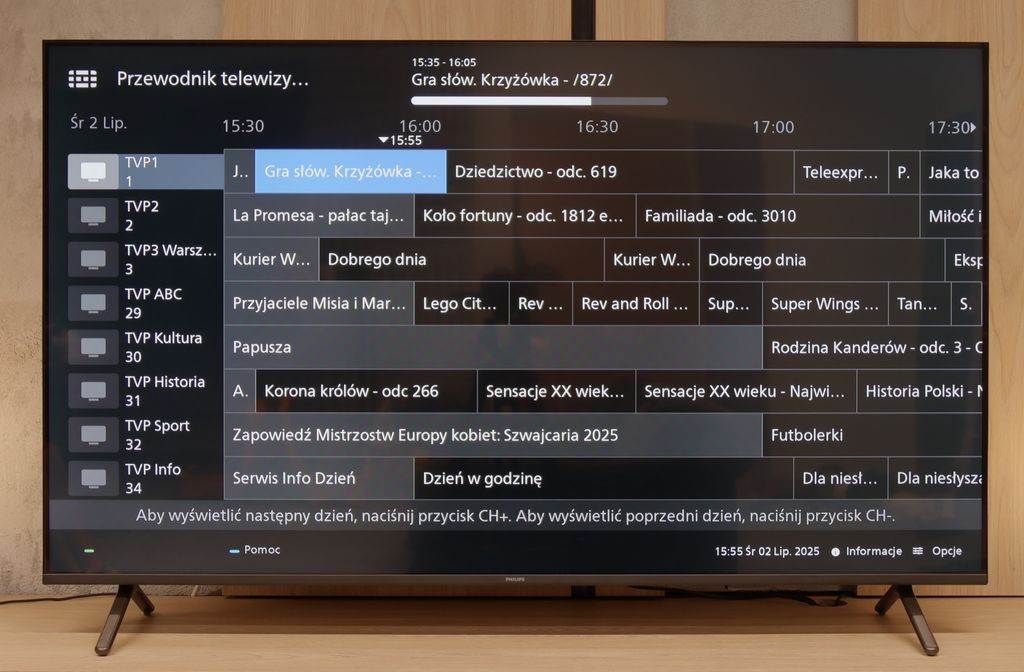
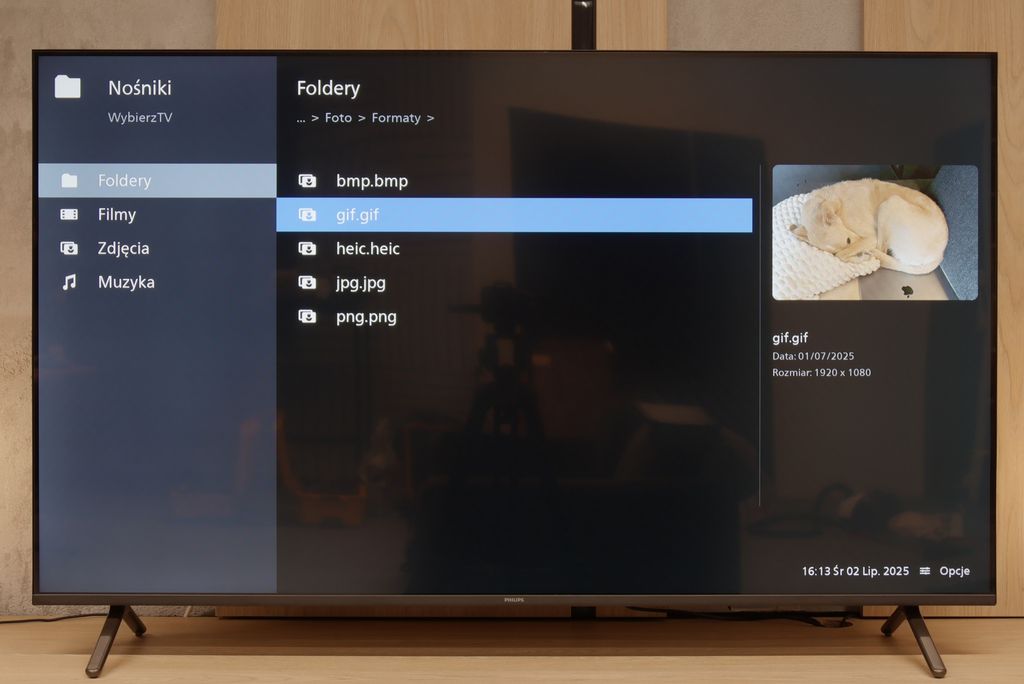
Contrast and black detail
5.6/10
6.1/10
Local dimming function: No
Local dimming function: No
Contrast:

Result
4,400:1

Result
4,950:1

Result
4,500:1

Result
5,650:1

Result
3,800:1

Result
6,000:1

Result
5,950:1

Result
6,250:1

Result
5,950:1

Result
5,750:1
Halo effect and black detail visibility:

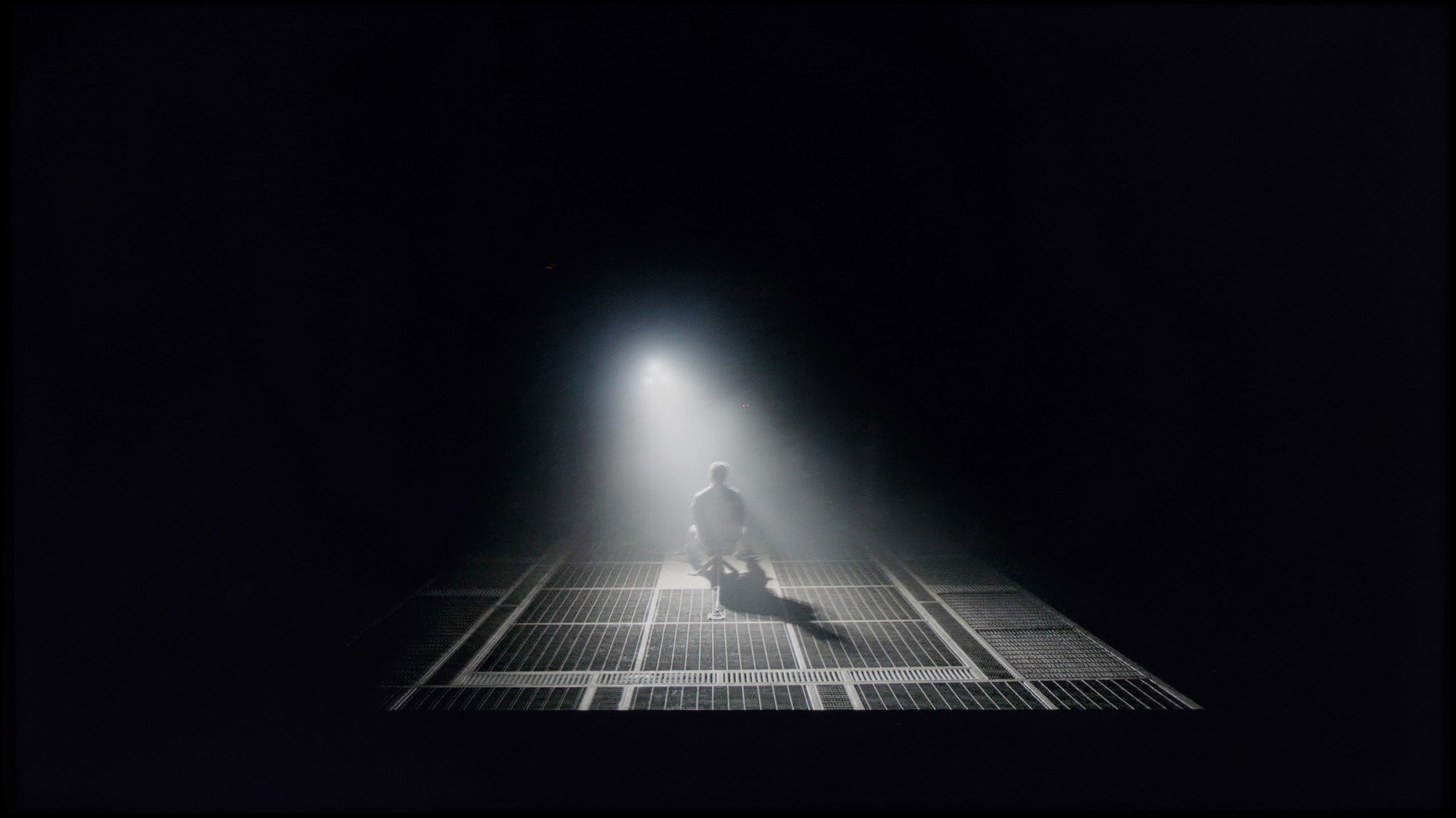
Philips PUS8359/12 in the 50-inch version is equipped with a VA panel. We highlight this quite strongly, as the manufacturer is known for intermittently using IPS/ADS panels depending on the diagonal size. This is particularly important in the context of contrast and black levels, which are the primary criteria in assessing image quality. The panel itself uses direct LED backlighting; however, it has not been supported by any local dimming system, which is rather obvious when considering the device's price range. Nevertheless, the use of this type of screen allows for several rows of better black levels and contrast compared to the aforementioned panels that do not have advanced backlighting systems. The simple design of the television has positively affected the visibility of details in the blacks. Our first test scene from the film "Oblivion" showcased quite good blacks, but also excellent separation of lights, which is not an easy task even for much more expensive units. The second material prepared from the film Sicario 2 also presented itself decently. Although due to construction flaws, some light bleeding can be noticed, the details themselves are well visible, and it's hard to criticize them. The fact remains, the black levels could be deeper.
Philips PUS8560 in the size version we tested is equipped with a VA panel. This means that black levels – for an LCD TV – can be considered decent. And that is indeed the case with this model. Both blacks and the overall impression of contrast in the movie scenes we tested are really quite good – the image doesn't bleed, and details are visible even in more challenging segments.
But the panel alone is not everything. Unfortunately, the PUS8500 does not come with local dimming (which is a given looking at the TV segment), so one has to reckon with the fact that in completely dark conditions, black can resemble shades of navy more than true black. On the other hand – and here's a plus for Philips – the Ambilight system does an excellent job. The backlighting really affects the perception of contrast. As a result, even if technically the black isn't perfect, the subjective experience of the picture becomes much more enjoyable. For many people, that's enough to make an evening viewing really spectacular.
HDR effect quality
4/10
4.1/10
Luminance measurements in HDR:

Result
281 nit

Result
280 nit

Result
324 nit

Result
290 nit

Result
320 nit

Result
273 nit

Result
300 nit

Result
324 nit

Result
343 nit

Result
334 nit
Scene from the movie “Pan” (about 2800 nits)


Scene from the movie “Billy Lynn” (about 1100 nits)


Static HDR10


HDR luminance chart:
Philips PUS8500
Luminancja HDR
Luminance of RGB colors
Philips PUS8359 (VA)
Luminancja HDR
Luminance of RGB colors
Philips PUS8359 didn't impress us with its performance in HDR materials. This model is capable of generating a maximum brightness of 320 nits, and often even less. Such results, combined with the lack of support for HDR Dolby Vision, mean that the image will be significantly darker compared to the source material. Therefore, it would be more beneficial for this television to play SDR content. This is also suggested by the quite low coverage of the DCI-P3 colour gamut at 83%, resulting in significant colour deficiencies. The fact remains that the television supports an HDR format based on dynamic metadata; however, HDR10+ is such a niche format that it doesn't offer any major advantages.
When it comes to HDR performance on the PUS8560, it's safe to say that it's rather average. The brightness of the panel is around 350 nits, so we consider this to be the absolute minimum for watching content in this format. However, it’s not a result that will impress viewers looking for the best possible picture.
On the plus side, it's worth noting that the PUS8500 series – including the PUS8560/12 tested here – is marketed as a QLED television. And indeed, we can expect a wider colour gamut here. This model is equipped with an additional filter (PFS), and the DCI-P3 coverage of around 90% should suffice for most users. This filter operates very similarly to quantum dots. As a result, colours are quite well-saturated. It's not an outstanding result, but it's entirely sufficient for watching movies and series from streaming platforms.
Factory color reproduction
4/10
6.2/10


Factory Mode
After calibration

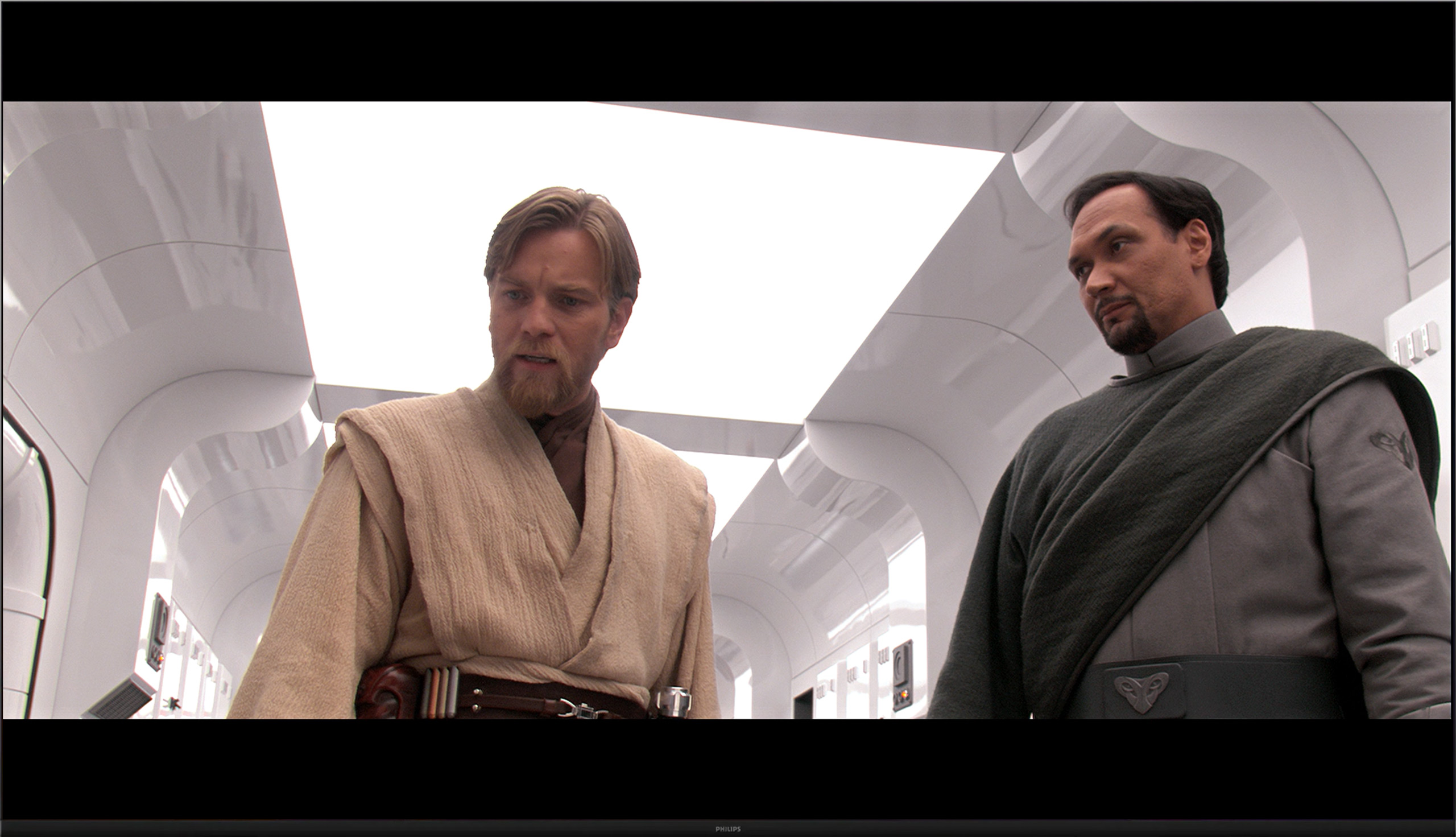
Factory Mode
After calibration
The best factory mode in terms of fidelity to the source material was "Film". This is what we used during our tests. Just like every other factory mode in televisions, it had its drawbacks. So we'll check what exactly was wrong with both SDR and HDR materials. In both cases, the white balance exhibited an excessive dominance of the green and red colour combination. This created a yellow tint spreading across the entire image, causing issues such as yellowed whites and problems with skin tones. This state of affairs was perfectly illustrated on the "ColourChecker" palette, where each of the tested samples was pushed towards its warmer counterparts. The foundation of the image is primarily contrast and black. These are represented by gamma charts and the EOTF curve. Looking at the first one, we can see a true rollercoaster, as both elevated and lowered gamma can be observed. The heavily elevated gamma caused visibility issues in black levels, whereas the lowered gamma resulted in a dramatic reduction in contrast. In this context, the EOTF curve performed significantly better, as it only slightly brightened the image.
We tested the television on the best available factory settings, that is, in Film/Filmmaker mode – this is the mode we recommend for everyday viewing. Unfortunately, it is not without its flaws. Both in HD and HDR content, the image had a distinct tendency to pinkness, caused by an excess of red and blue in the white balance. Another issue turned out to be excessive brightness of the image, as confirmed by both the gamma graph and the EOTF curve. This characteristic was responsible for the loss of detail and washed-out colours in more challenging HDR scenes we mentioned earlier. All of this led to quite significant colour reproduction errors – in extreme cases, the delta E value exceeded 7, while the threshold for visibility of errors for the human eye is about 3. This situation can be improved through calibration, and you can read about its effects below.
Color reproduction after calibration
5/10
8.4/10




Philips provides a wide range of image calibration tools in both its higher-end and budget models. We utilised these tools and got to work, which wasn’t as easy as many of you might think. While we managed to model the white balance, significantly improve the gamma, and refine the EOTF curve in both cases, the deltaE errors remained exceptionally high. There are several reasons for this situation, which are directly related to the low coverage of the DCI-P3 colour gamut and the maximum brightness of the unit in HDR material.
The Dutch manufacturer offers quite a large dose of settings in its products, so as usual, we decided to tinker with them a bit. The effects are immediately noticeable – we managed to correct the white balance, which made the image cease to appear overly pinkish. The brightness characteristics were also partially equalised, of course within the limits that the television itself allows. The picture is no longer so excessively brightened, and the overall reception after calibration is definitely better than in the factory settings of the Filmmaker mode.
You could only nitpick about the characteristics of the EOTF curve, which still indicates that the image tends to brighten HDR content. Despite our efforts, the darkest parts of the scenes can still be too bright, and the brightest ones do not always reach their full contrast potential. However, it must be clearly stated that we are dealing with a typically budget-oriented design – one cannot expect reference-quality rendering of HDR content from it.
Calibration has definitely helped this model – it improved the balance, toned down the aggressive colour palette, and brought the image closer to what one can expect from a well-configured movie mode. However, there are certain limitations that cannot be overcome.
Smoothness of tonal transitions
7.4/10
6.3/10





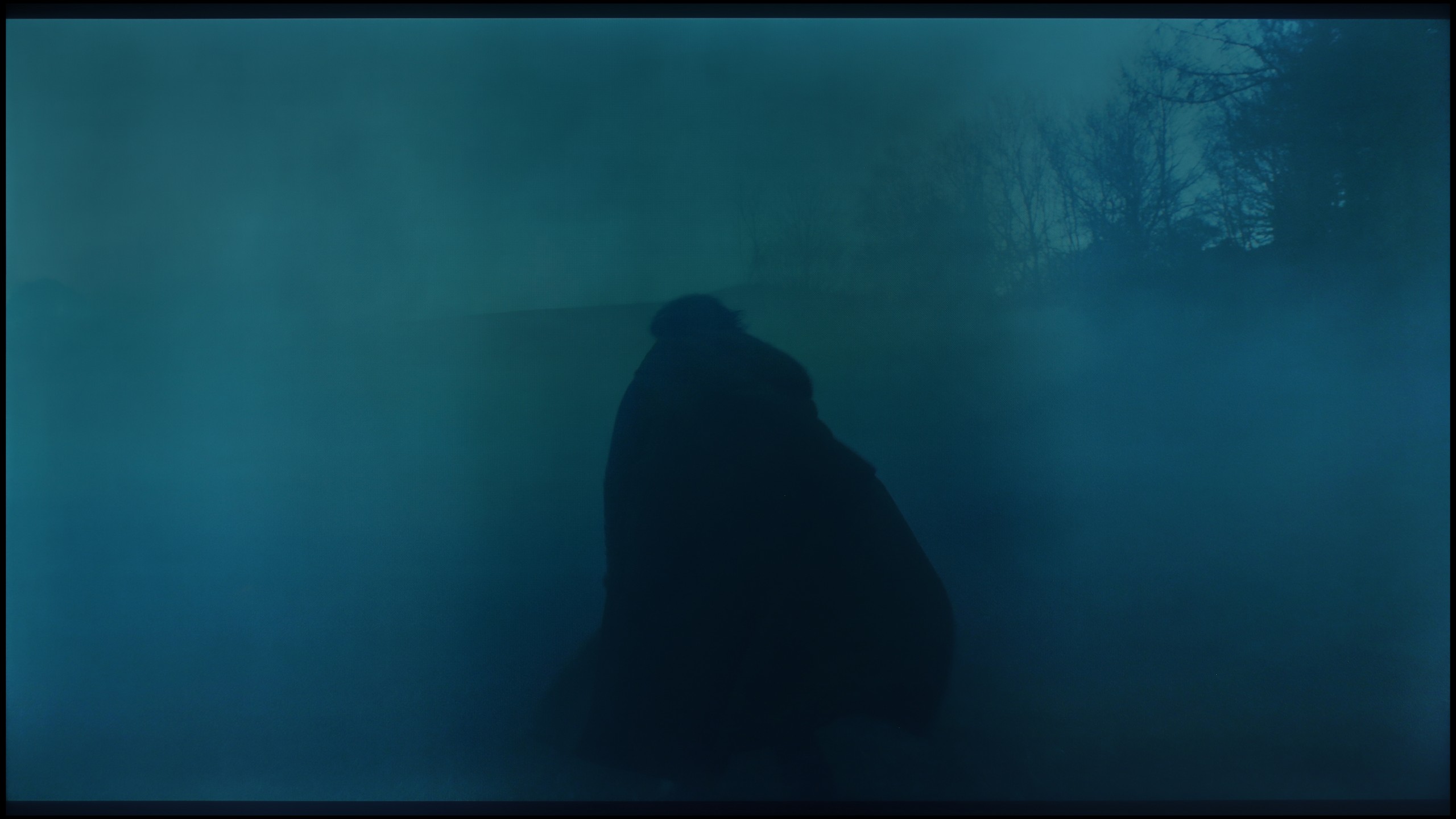

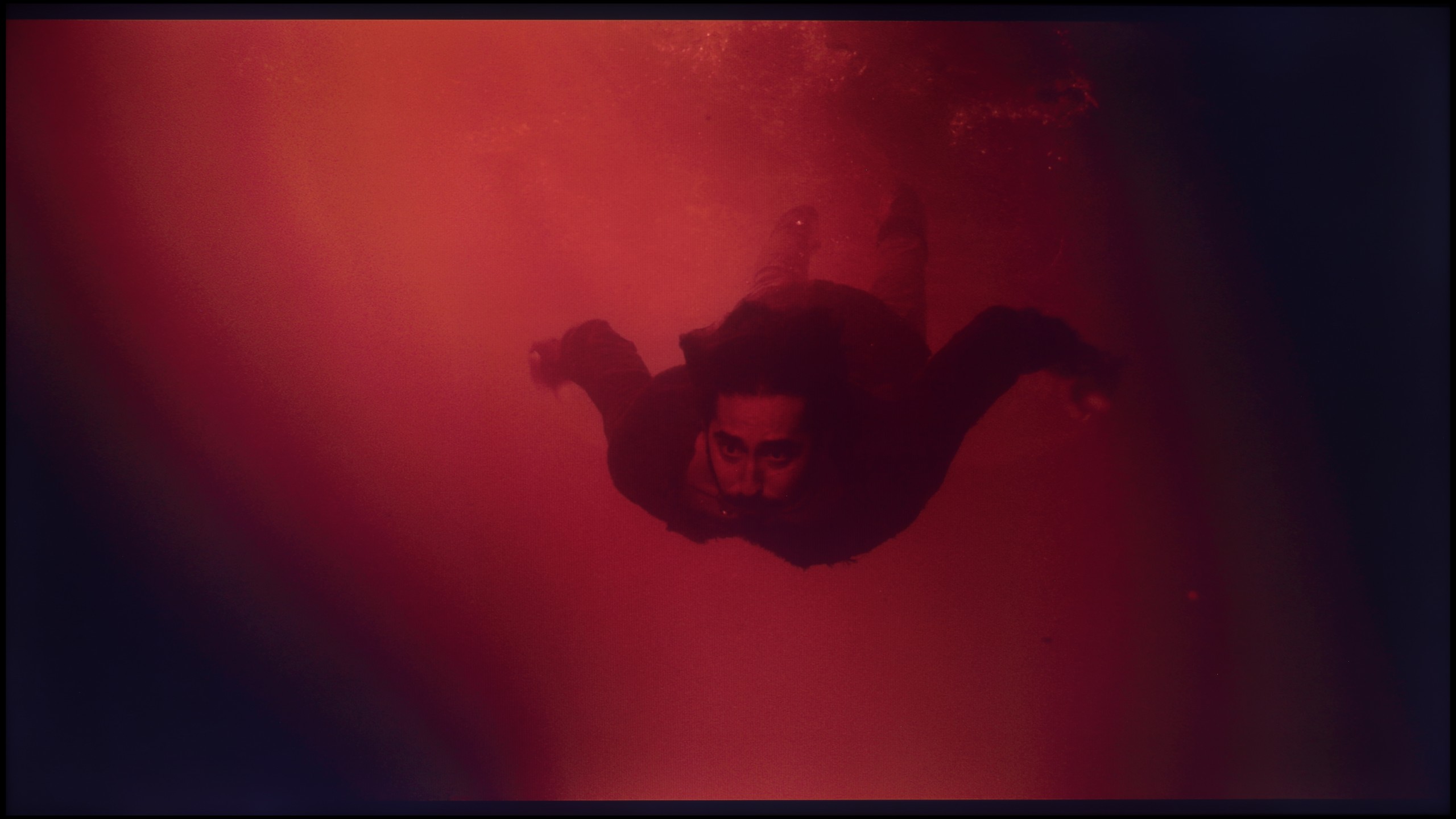




The fluidity of gradation in PUS8359 is at a good level. Practically every scene has preserved tonal transitions. The most difficult scene, which is the second from the film "The Green Knight", turned out not to be the proverbial "killer" and showed that the tested television, given its price range, performs excellently. The only thing we can "pick at" is the darkest scenes, where some inconsistencies can be seen here and there, but this is rather selective. Nonetheless, we rate the fluidity of tonal transitions very well. However, we must mention that this feature is not available in HDR materials.
The PUS8560 handles colour blending into smooth gradients very well. During testing, the image appeared coherent and natural, with serious issues regarding tonal transitions occurring only in very dark scenes – for example, in a shot with red water, where subtle cut-offs between colours could be observed. However, these are rather exceptions that don’t spoil the perception of most content. It’s worth mentioning another phenomenon that has a greater impact on image quality – this relates to the so-called dithering, which is a slight “tingling” visible on solid backgrounds. This effect can be particularly noticeable in high-quality materials and may slightly detract from the impression of image clarity. It is for this fault that we deducted some points in the rating.
Image scaling and smoothness of tonal transitions
6/10
6.1/10
Smooth transition function

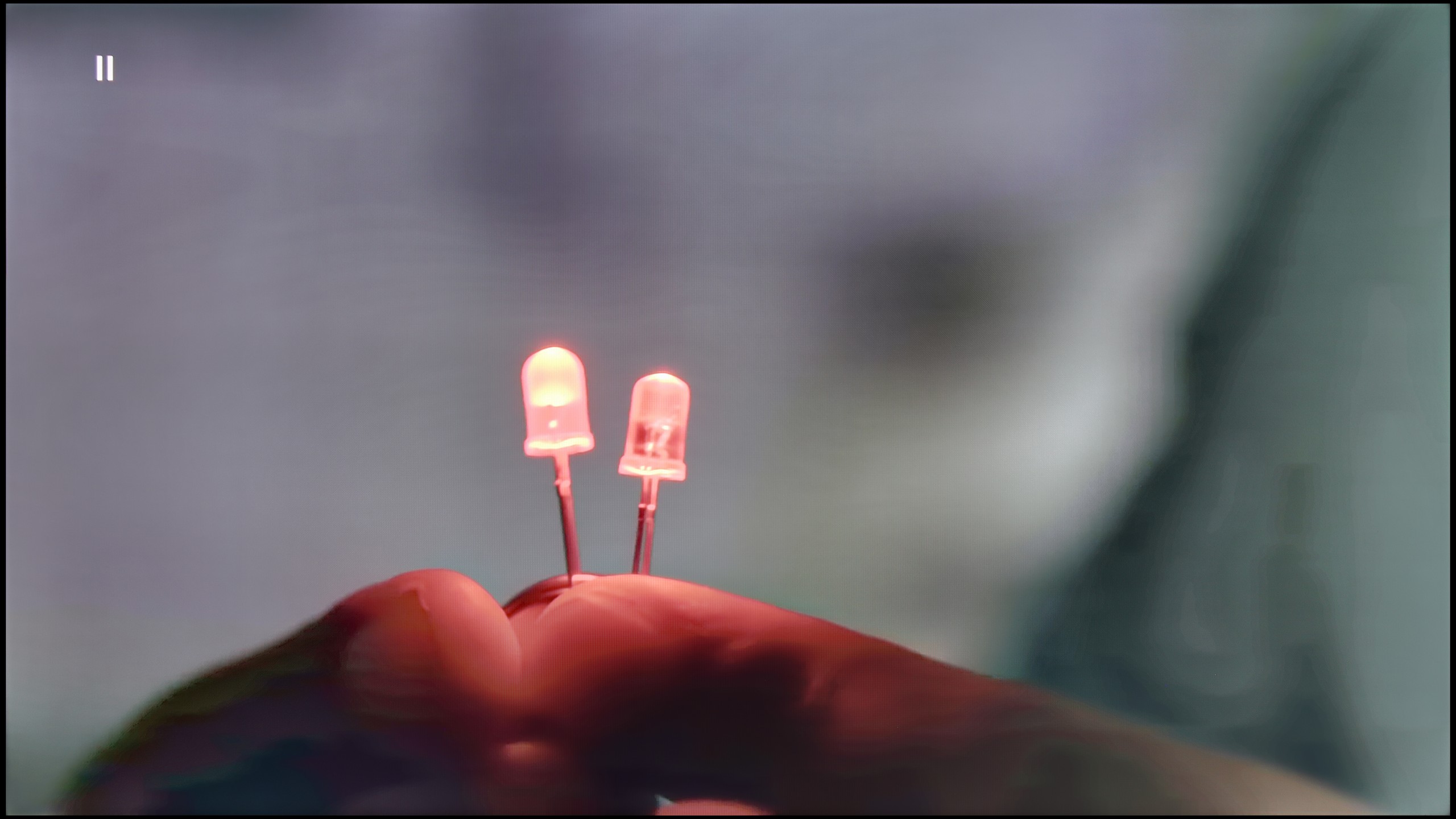
Image without overscan on the SD signal


In this paragraph, we will look at two functionalities. We will once again take a look at the feature responsible for tonal transitions, but we will also check how the television handles image scaling. The option responsible for smooth gradation is called "Distortion Reduction." As we have established, it quite effectively smooths out inconsistencies. However, we must point out two things: we cannot enable it for HDR material, and it blurs details in films.
The tested television does not boast the best image scaling. The overall blurriness of the image is quite noticeable, but what’s worse, it blurs details. This is particularly evident on the branches and hair of the model. There is also a characteristic white halo around the character.
Philips PUS8560 offers a deinterlacing function, hidden under the name “distortion reduction”. And while it indeed serves its purpose, smoothing out problematic tonal transitions, it operates a bit too broadly. In practice, it affects not just colourful gradients but also softens faces, clothing textures, and furniture surfaces. This undermines the authenticity of the image – especially in films where natural texture is of great importance. However, if someone is looking for smoothing at any cost, it’s best to set this option to “Low”. For cinema image enthusiasts – we definitely do not recommend it.
On the plus side, the quality of scaling older materials is worth noting – the PUS8560 model handles them surprisingly well. The image retains a natural softness without artificially boosted sharpness. It’s also worth mentioning that the TV correctly displays very low-resolution content, avoiding issues with image cropping (so-called overscan).
Blur and motion smoothness
3.8/10
4/10


Blur (native resolution, maximum refresh rate):





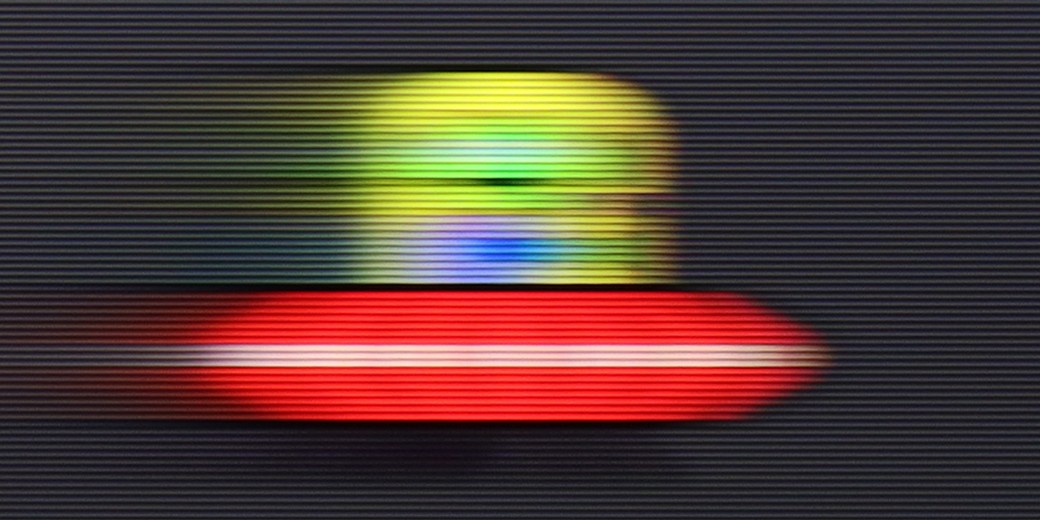
Philips PUS8359 will not be the best television for sports. The reason for this is the lack of implementation of even the basic motion smoothing feature, which was to be expected given the price of the device. We also note that we are dealing with a VA panel, whose sharpness does not stand at the highest level by itself. This type of panel is mainly associated with high contrast, which comes with a rather slow response time, as we can clearly read from the matrix analysis results. As you can see, from the pictures captured in fast motion, the image is blurred typically for this type of panel. While it may not be the ideal option, it can conditionally be used for watching sports; however, one must keep in mind the less-than-sharp motion. It is worth mentioning that movies will be characterised by judder since the television does not possess any, not even the simplest, motion smoother.
The Philips PUS8560 is a television equipped with a 60 Hz refresh rate panel, which already limits its capabilities for displaying dynamic content right from the start. Watching sports or playing on a console is not one of the more enjoyable experiences. The situation is further worsened by the absence of any option to improve film fluidity. In the menu, you won’t find settings that would allow for the activation of motion smoothing or even a slight motion blur for films recorded at 24 frames per second. You can imagine the effect. The image can appear choppy, especially in shots with panoramic camera movements.
Console compatibility and gaming features
4.7/10
4.7/10
- ALLM
- VRR
- VRR range6048 - 60Hz
- Dolby Vision Game Mode
- Correct implementation of HGIG
- 1080p@120Hz
- 1440p@120Hz
- 4K@120Hz
- Game bar

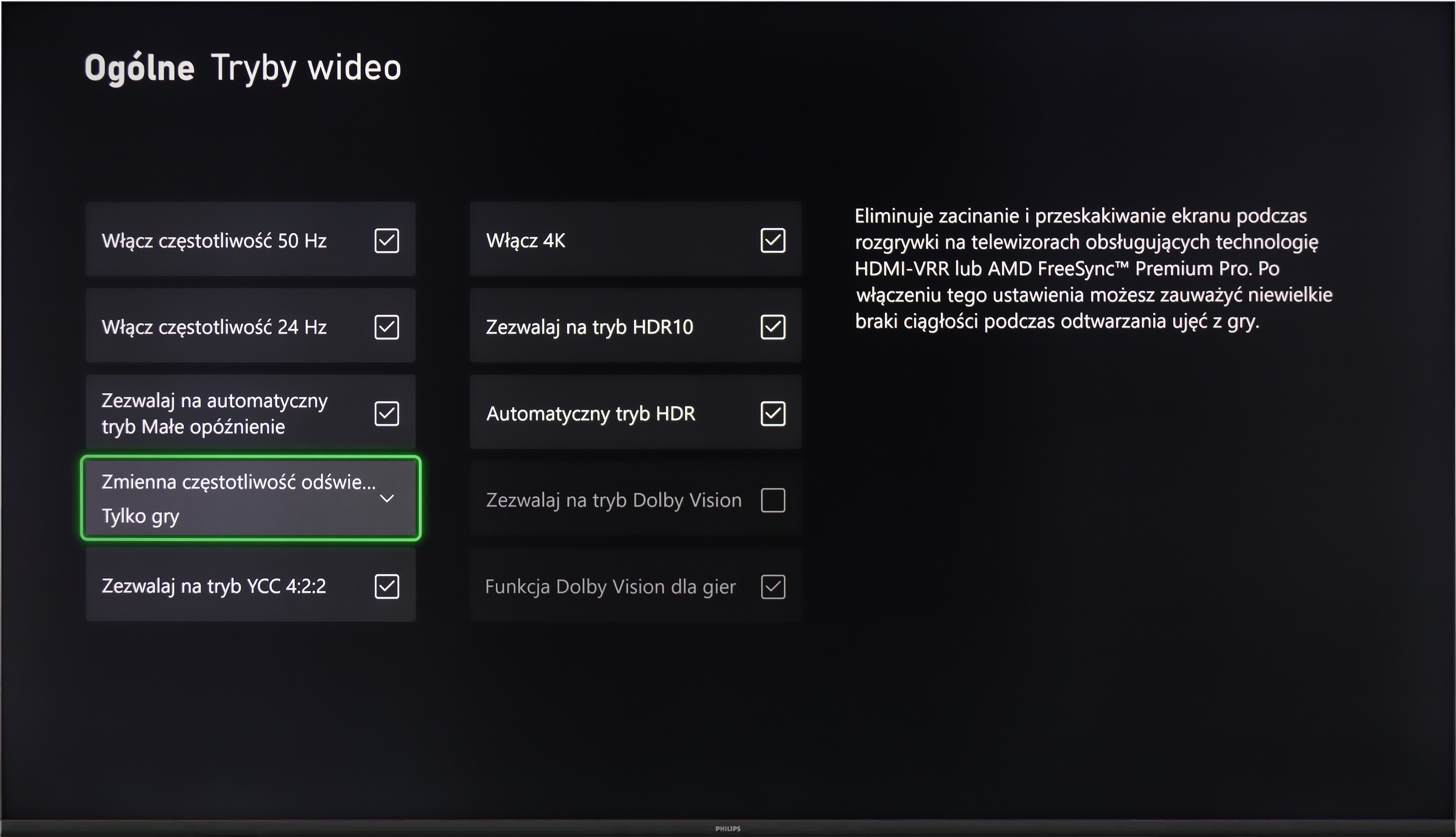

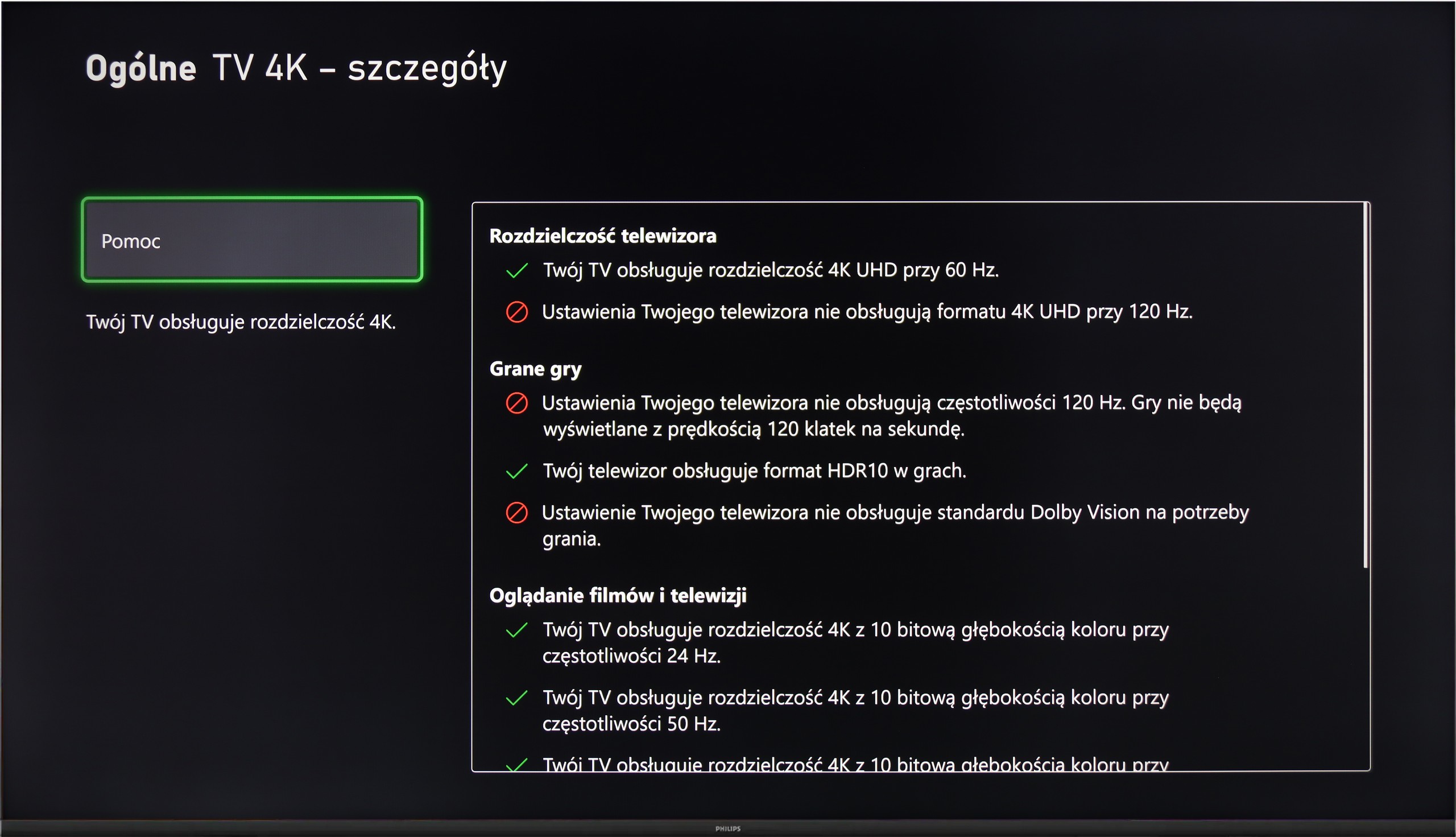

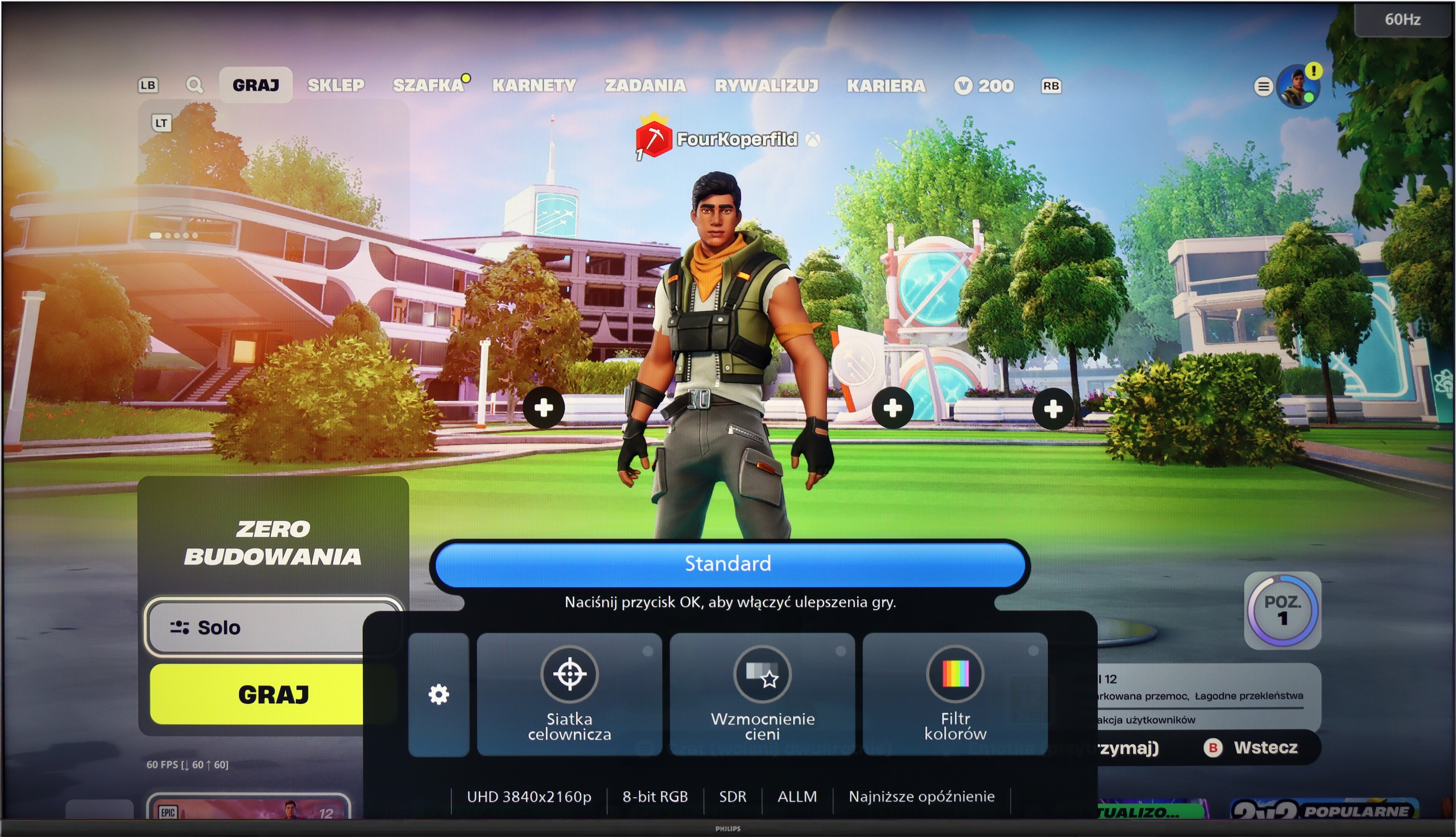

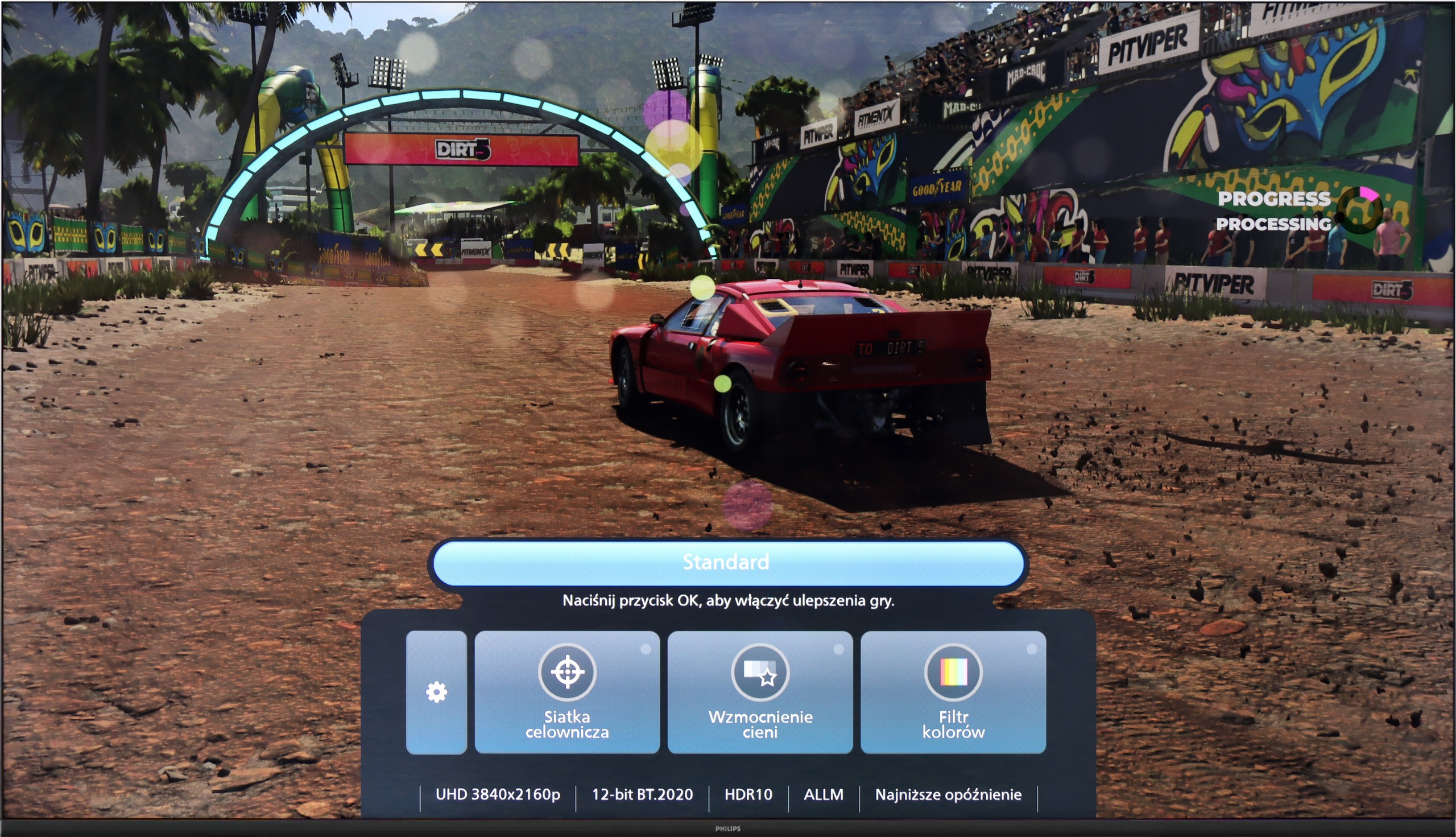
It won’t be a surprise if we say that Philips PUS8359/12 only has the most basic support for consoles. Once we connect the console, we can expect features like VRR and ALLM. This is quite pleasing for the former, as life has shown that even in more expensive units, there can be issues with this. A nice touch is the implementation of a special GameBar that allows changing settings on the "fly", so we won't have to exit the gameplay and become unnecessarily distracted. This feature also allows for adapting the gameplay to the needs of individuals with disabilities, which will certainly be extremely beneficial.
Although the Philips PUS8560 is not designed with gamers in mind, the manufacturer has equipped it with a few features that may prove useful when connecting a console. Onboard, we find automatic switching to game mode (ALLM), as well as a simple connection status information bar – the so-called Game Bar. It doesn't make a particularly visual impression, but it serves its purpose. The presence of variable refresh rate (VRR), operating in the range of 48 to 60 Hz, may come as a surprise. This is not a wide range, but for less demanding games or titles with unstable frame rates, VRR can help reduce the tearing effect. However, this is the only element that can be considered beyond the minimum.
It must be clearly stated that the PUS8560 is not equipment for gamers looking for a responsive screen and full support for modern console features. It lacks HDMI 2.1 ports, the refresh rate is limited to 60 Hz, and the panel's response time is not among the fastest. This model may at best suit people who play occasionally and want to enjoy the Ambilight system.
Input lag
10/10
10/10
SDR
HDR
Dolby Vision
The measured input lag when connected to the console was very good, with nothing to pick at. Both at FHD and 4K settings, we recorded delays of 12ms, and when adding the HDR format to the higher resolution, the lag dropped to 11ms. Each of these results should be considered more than satisfactory, as such a level allows for gameplay that is practically free of delays between controller, eye, and screen.
The input lag on the PUS8560 is very good. When we previously mentioned that this screen is rather for the "casual gamer", there's nothing to be ashamed of in this regard – even compared to screens aimed at gamers. Results around 12 ms are truly remarkable, allowing for an enjoyable responsive gameplay experience. It doesn't matter whether we're playing in Full HD or 4K – the lag remains equally low, so if you're after a fast reaction time, the PUS8560 definitely won't disappoint in this area.
Compatibility with PC
6/10
5.6/10

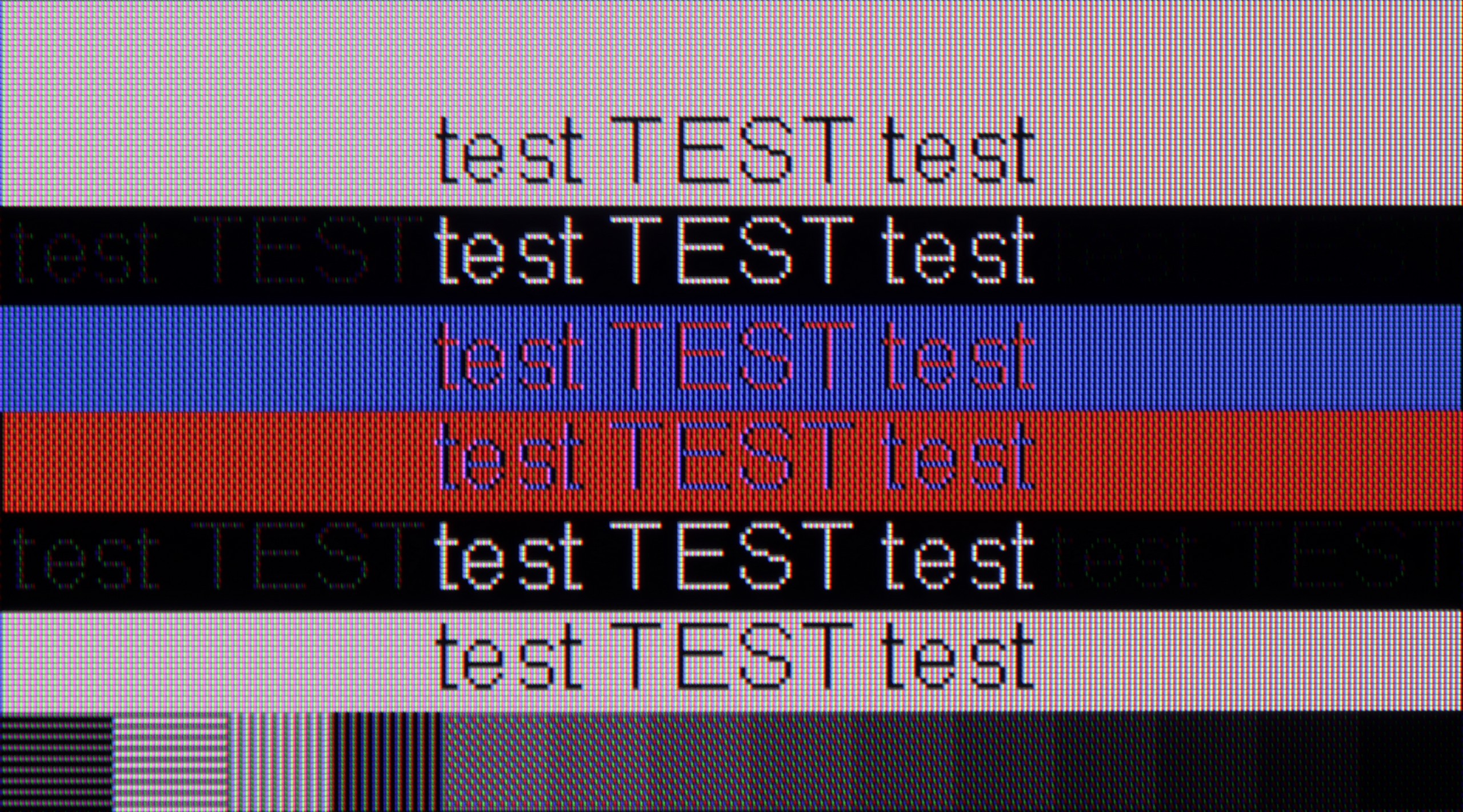
Connecting the Philips PUS8359 to a computer won't create major complications in terms of gaming. The latency is at a very good level, and working at 4K HDR settings was associated with an 11 ms input lag, which is an imperceptible value on the line from eye to screen to mouse. The tested TV also supports chroma 4:4:4, making work with text files convenient. This model does not support G-Sync and offers a refresh rate of 60 Hz, which can be a significant drawback for PC gamers. Therefore, the gaming rating is lower, although the device performs excellently in everyday office tasks.
If we're talking about working with a PC on the PUS8560, it looks… quite strange. Chroma 4:4:4 is present in “Monitor” mode, but there’s a problem with grey fonts – not all subpixels light up, which makes the text appear jagged. Meanwhile, in “Game” mode, chroma 4:4:4 disappears, but the grey fonts look correct. In practice, we are therefore forced to juggle settings if we want to have perfectly readable text all the time. And what about gaming on a computer? Here our opinion remains unchanged compared to consoles – it’s possible, but without fireworks. There’s no variable refresh rate for G-SYNC graphics cards, and the refresh rate itself remains relatively low. On the plus side, we can once again highlight the very low input lag, which saves the situation in fast-paced games.
Viewing angles
3.4/10
3.3/10
The decrease in brightness at a 45-degree angle is 65%. This means that even a slight shift from the center of the screen can cause discomfort related to color degradation and image fading. This is rather a characteristic feature of the vast majority of VA panels that lack an angle coating.
The viewing angles on the PUS8560 are exactly what you'd expect from a VA panel - it's not the best. The image loses quality even with a slight shift off-axis – colours become washed out, and blacks start to resemble a dark navy. This is, of course, the price for the better contrast that VA offers head-on. In the case of our 55-inch model, it can still be acceptable, especially if the TV is positioned perfectly in front of the couch. But with larger screens or a less central setup in the living room – it could be a problem for comfortable viewing.
TV efficiency during daytime
4.7/10
4.9/10

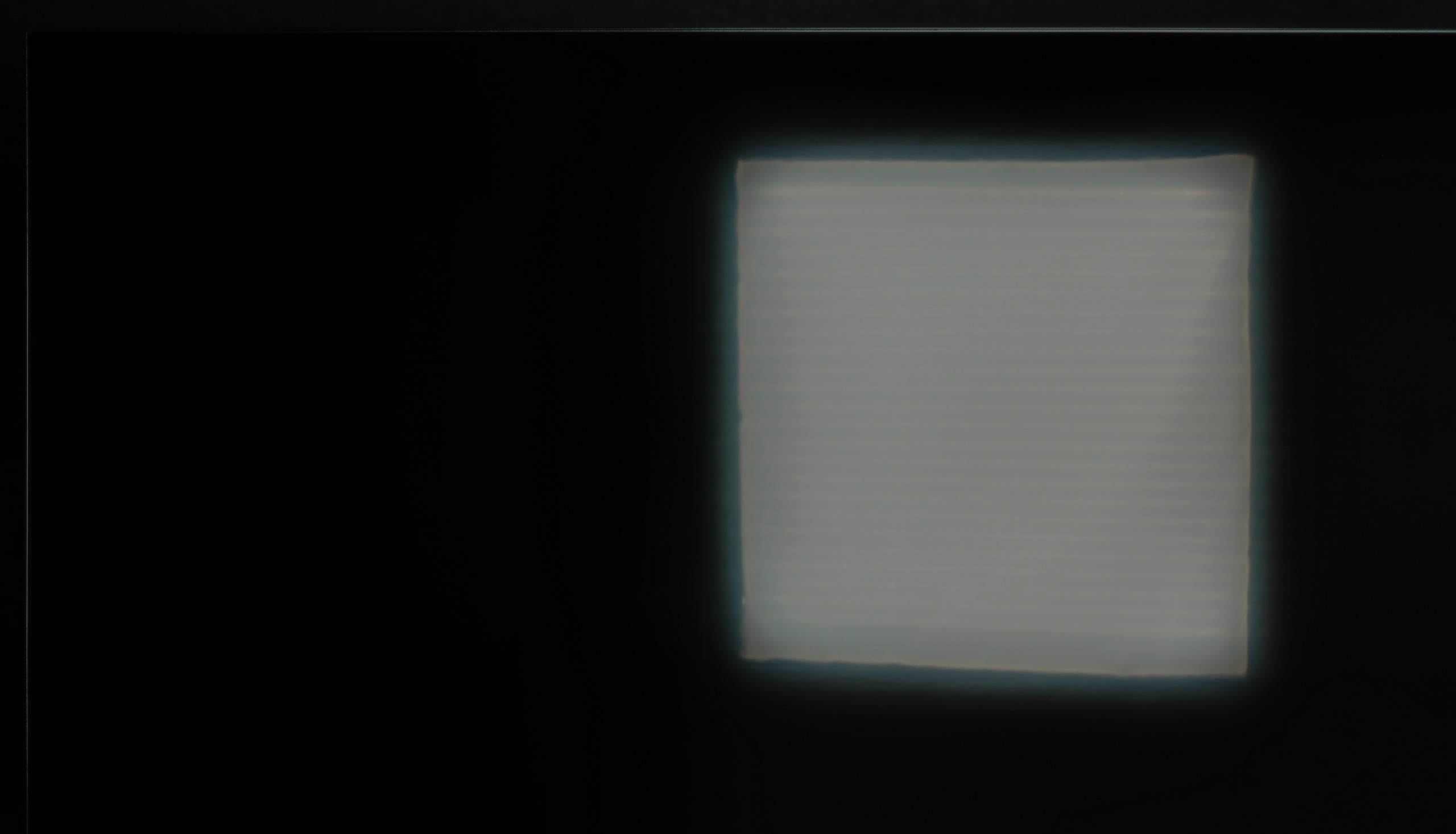

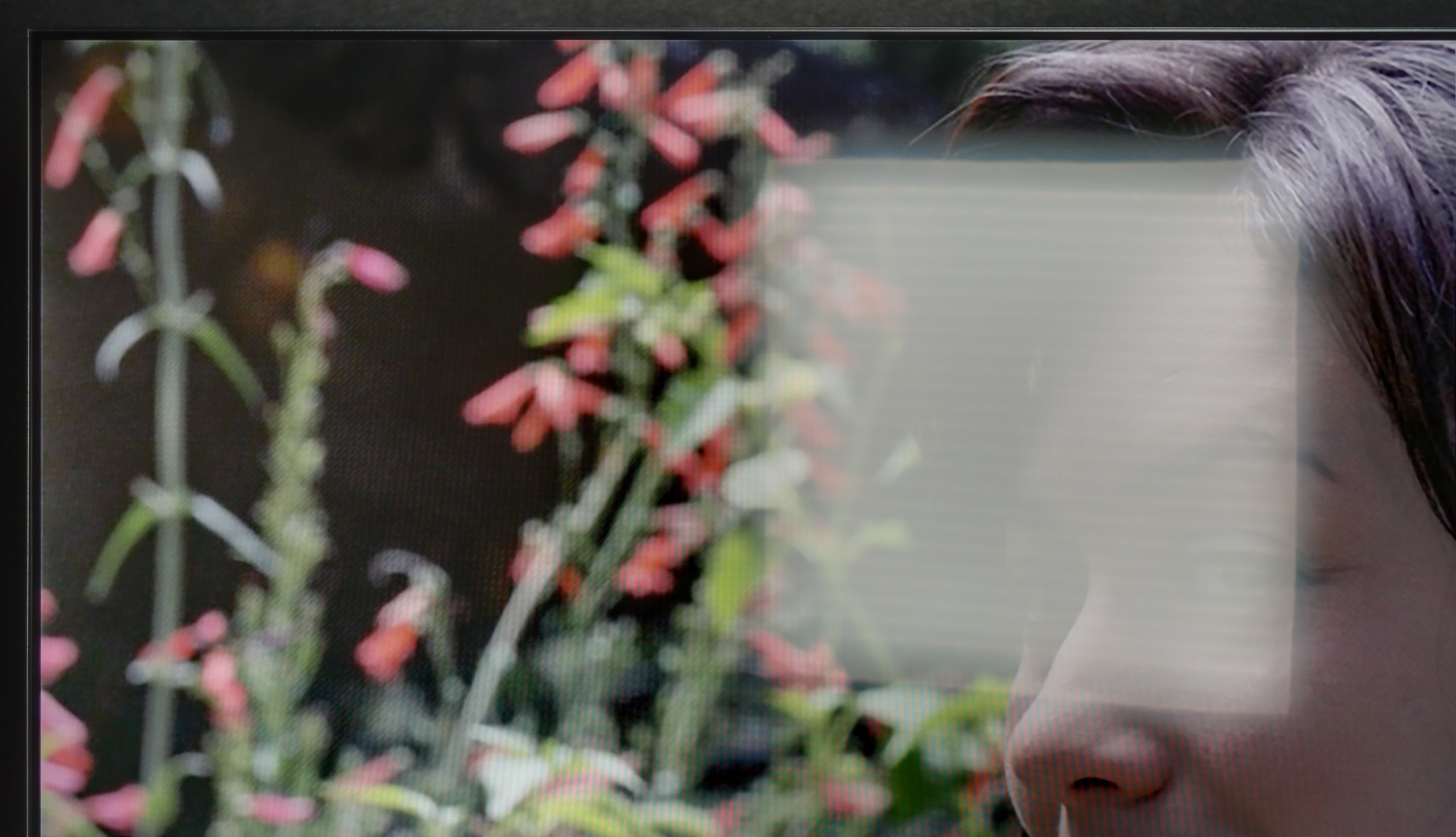
Matrix brightness
Average luminance SDR
Philips PUS8500 : 331 cd/m2
Philips PUS8359 (VA): 318 cd/m2
The screen Philips PUS8359/12 has a satin finish. This type of panel finish allows for quite good performance in keeping light reflections in check and provides fairly comfortable viewing of the television during the day. It’s worth mentioning that the maximum brightness of the television in SDR content is about 320 nits, which is a reasonable result, especially since the brightness is maintained even at 100% screen white fill.
The PUS8560 performs reasonably well during the day... moderately. The satin finish of the panel does a pretty good job of reducing reflections, which means that light from windows or lamps doesn't interfere too much. The black levels also look decent for a VA panel – even in daylight, there aren't significant contrast losses. But the magic fades when it gets really bright. The panel's brightness is around 300 nits, which is definitely too little to speak of full comfort in a heavily sunlit room. In such conditions, the PUS8560 simply needs to be complemented with blinds – otherwise, the picture starts to look quite washed out.
Details about the matrix
Subpixel Structure:

Panel uniformity:
Philips PUS8359 (VA)
Philips PUS8500
TV features
5.7/10
4.9/10
- HDMI inputs3 x HDMI 2.0, 0 x HDMI 2.13 x HDMI 2.0, 0 x HDMI 2.1
- OutputsToslink (Optical audio), eARC (HDMI), ARC (HDMI), Mini-Jack (Headphones)Toslink (Optical audio), eARC (HDMI), ARC (HDMI), Mini-Jack (Headphones)
- Network InterfacesWi-Fi 2.4GHz, Wi-Fi 5GHz, Ethernet (LAN) 100MbpsWi-Fi 2.4GHz, Wi-Fi 5GHz, Ethernet (LAN) 100Mbps
- TV receptionDVB-T, DVB-T2, DVB-S, DVB-S2, DVB-CDVB-T, DVB-T2, DVB-S, DVB-S2, DVB-C
Classic features:
- Recording to USB (terrestrial TV)
- Recording programming
- Picture in Picture (PiP)
- RF remote control (no need to aim at the screen)
- Backlit remote control
- Teletext
- Audio only mode
- Possibility to connect Bluetooth headphones to the TV
- Possibility to simultaneously use Bluetooth headphones and the TV speaker
Smart features:
- AirPlay
- Screen mirroring (Windows Miracast)
- Wyszukiwanie głosowe
- Voice search in native language
- Ability to connect a keyboard and mouse



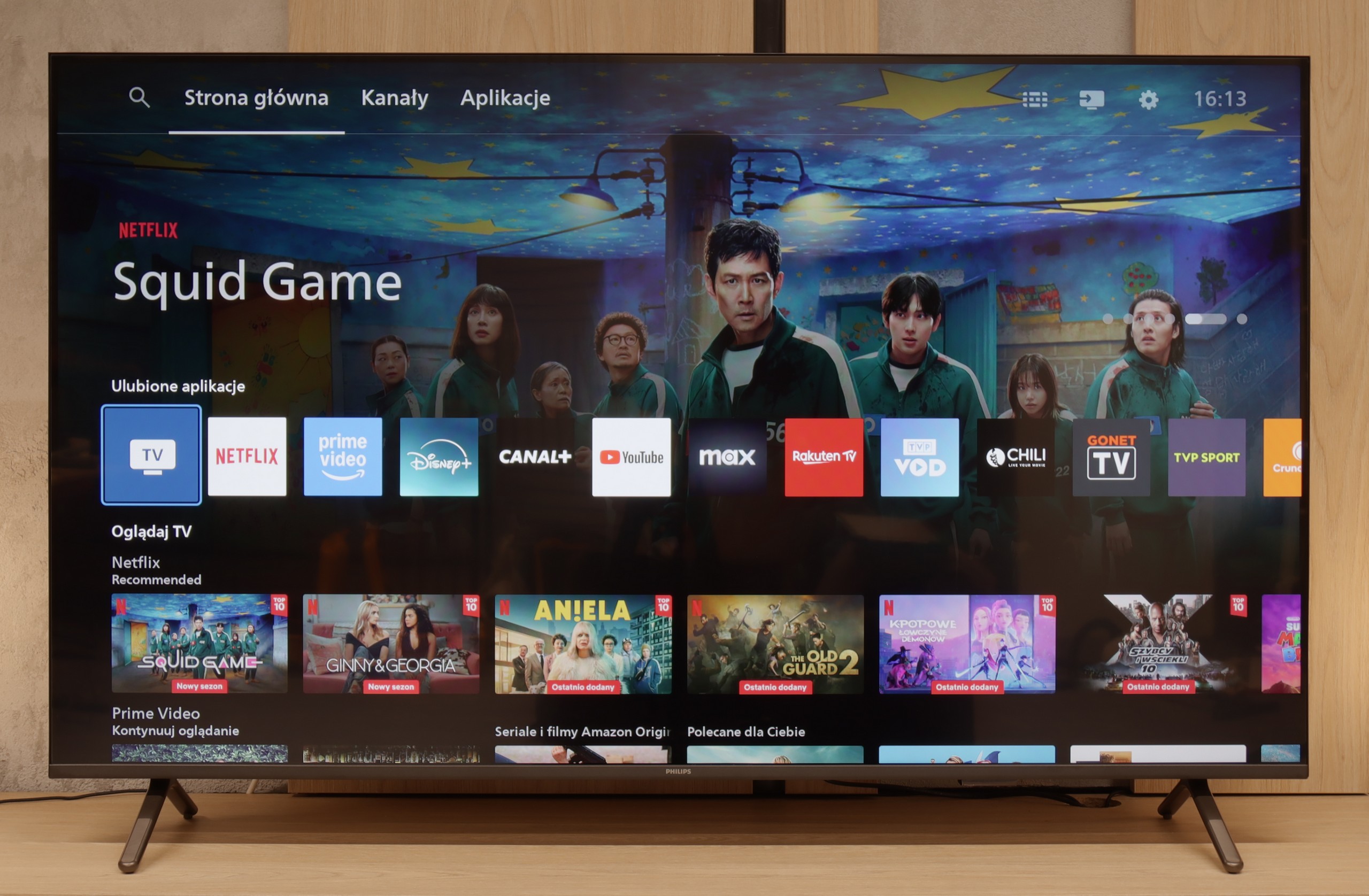
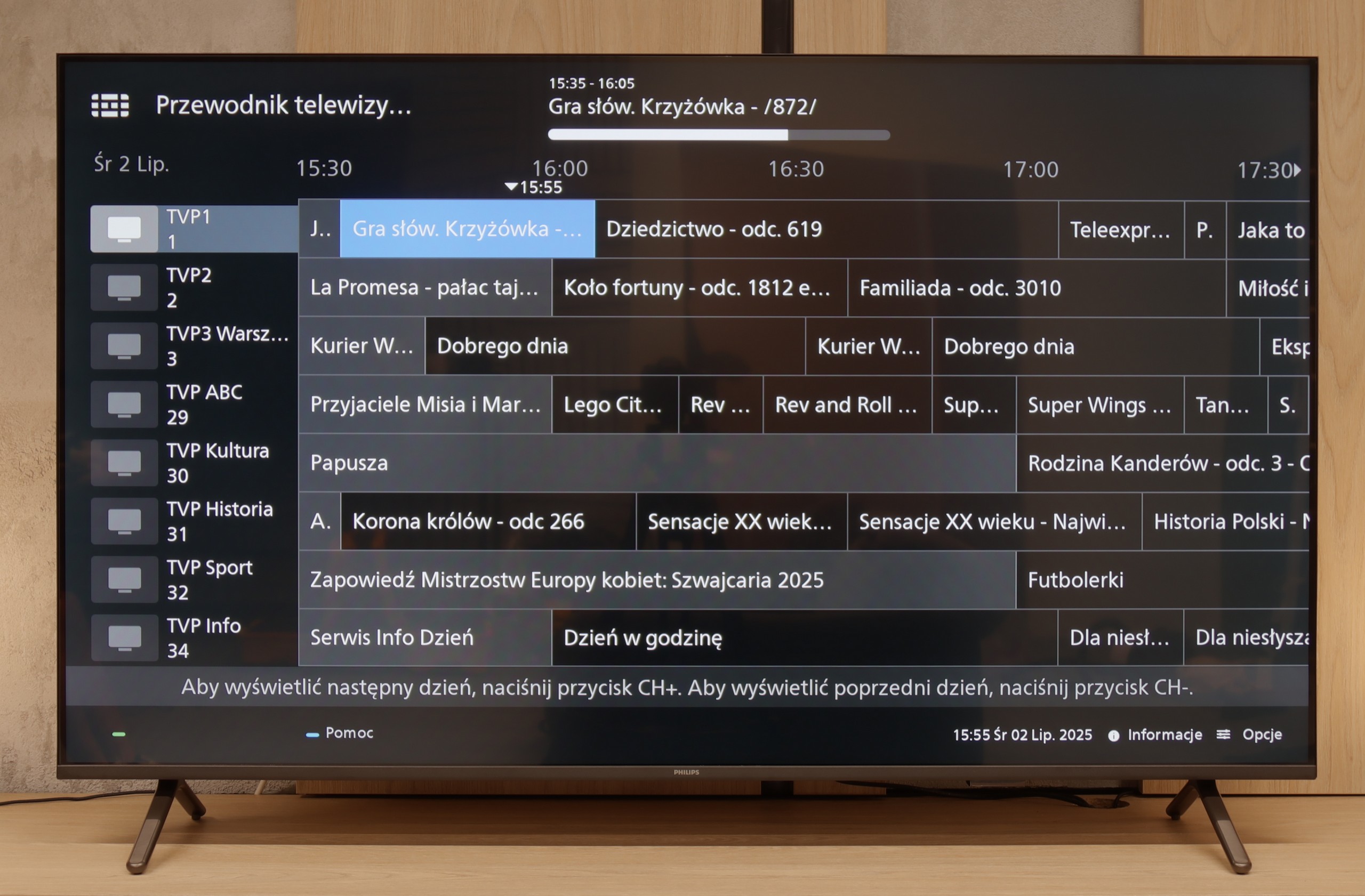
It’s hard not to mention the biggest differentiator of the manufacturer’s TVs first. We’re of course talking about the colorful Ambilight backlighting, which is placed on the back of the device and displays colours customised to what’s happening on the screen, often allowing for an even greater immersive experience. The operating system responsible for the TV’s functioning is Philips' proprietary system cleverly named TitanOs. It is definitely more closed off and limited in terms of app resources than is the case with this manufacturer’s TVs based on GoogleTv. Besides the lack of significant applications, its closed nature also reveals itself in another aspect. We won’t be able to do basic things like programming recordings or recording to USB. People using Apple devices may also feel disappointed by the absence of AirPlay, which allows for easy screen streaming. Fortunately, there is an option to connect a keyboard and mouse for easier navigation through the TV’s menu. It’s worth mentioning that there is the possibility of connecting headphones, but only wired ones. If we plug them in, we can also play audio through the TV’s speakers. It’s also worth adding that controlling the TV happens via IR, not Bluetooth, which is quite inconvenient these days.
In summary: TitanOs has quite a few “buts,” especially when we are aware users needing and using various streaming platforms. It’s rather an option for those limiting themselves to the so-called holy trinity, which is Netflix, YouTube, and CDA.
Classic TV Features:
If you’re looking for a TV that, in the basic sense, “works” – the PUS8560 will fill that role. In terms of classic features, we have a rather minimalist set. On the plus side, there’s an electronic program guide (EPG), teletext, a backlit remote with a classic numeric keypad, and a headphone jack input. It sounds a bit like a dream set for seniors – and there’s some truth to that. However, it must be said clearly: this is a TV with very limited capabilities. We won’t find USB recording from DVB tuners here, and there’s no Picture-in-Picture mode or other conveniences known from more expensive models.
Smart TV:
How does SmartTV fare on the PUS8560? Well, it gets a bit trickier here. The PUS8560 runs on the Titan OS, which in this particular implementation posed significant issues. Some functions, though present “on paper,” simply didn’t work. For example: Wireless screen mirroring features like Chromecast or Miracast – we tried to activate them with several different phones and laptops… without success. Perhaps this will be fixed in the future, but at the time of testing – it didn’t work. Also, the speed of the system left much to be desired – switching applications or home screens was simply slow. A substantial portion of the functions in the menu seem to be heavily hidden in the depths of a poorly organised system. To make matters worse, the library of available applications is quite limited. Although the situation with apps is better than last year, it’s still far from ideal. A modern remote tries to save the situation – slim, elegant, backlit and really well-made. Unfortunately, it operates on classic infrared, so you have to aim it at the screen. The only exception is voice control, which works via Bluetooth… it’s just a pity it doesn’t support Polish.
Playing files from USB
8/10
8/10
Supported photo formats:
Maximum photo resolution:

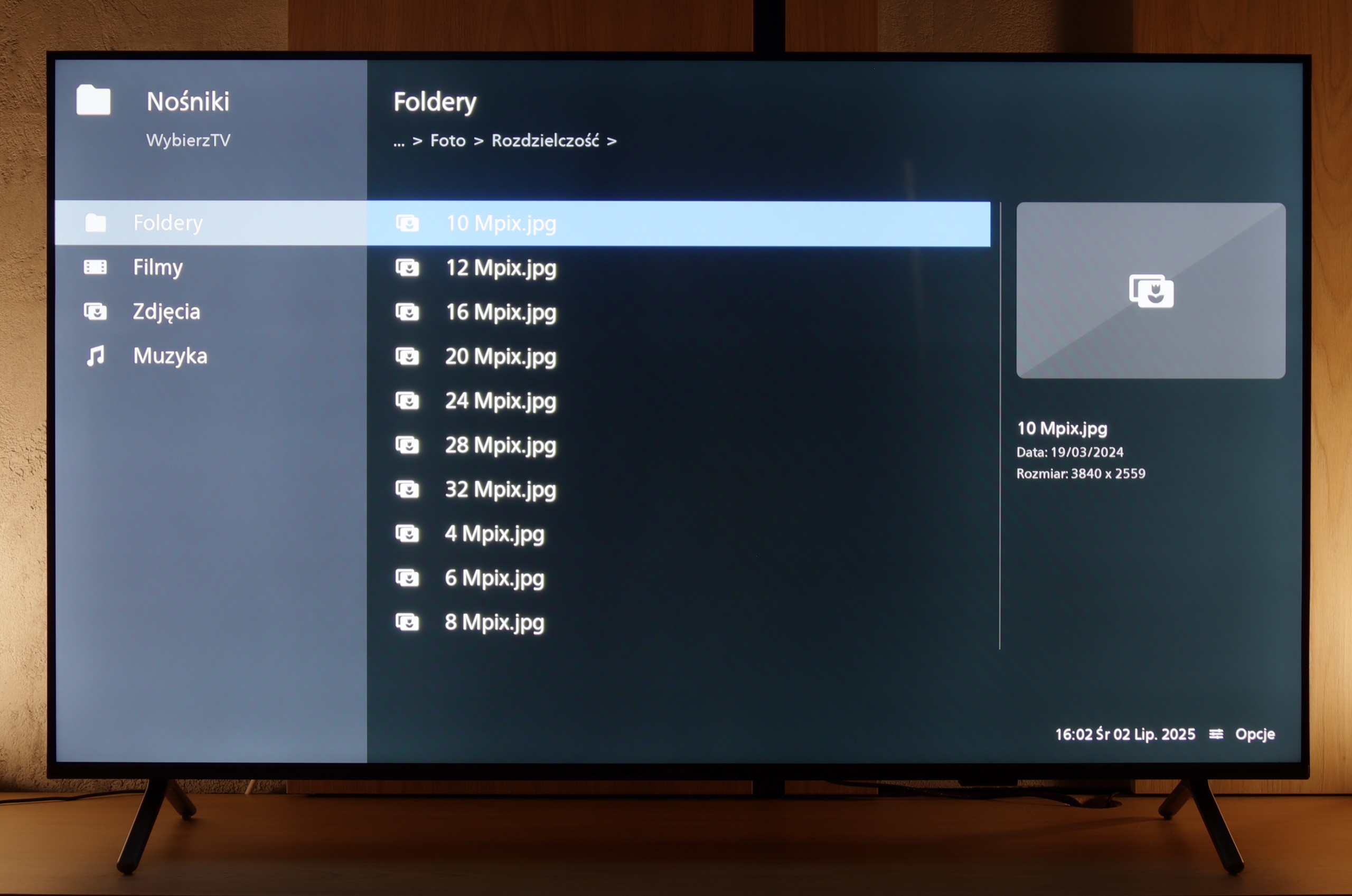
The default media player built into Philips PUS8359/12 offers quite a wide range of capabilities, but it also has its limitations. It plays virtually all video formats, with the obvious exception of Dolby Vision and the less obvious .asf, which is not commonly encountered. However, the issue lies in the lack of the H.265 HEVC codec at high bitrate. When it comes to photos, the player performs adequately, but it lacks support for some popular resolutions and formats, such as HEIC, used on Apple devices. The player performs best with audio, where it can be praised. Unfortunately, due to system limitations, there is no possibility to expand its features, which means we are left with what the manufacturer has provided.
PUS8560 handles most popular video and audio formats from USB memory without much hassle, so there's no need to elaborate on individual compatibilities. In everyday use, it should just work – and it does. The only thing worth noting is the handling of images. Although the television easily recognises popular extensions, with very high resolution graphic files, there are times when some images simply won't display. It might not be a major issue, but it's good to keep it in mind, especially if we want to view photographs straight from the camera. Besides that, PUS8560 shouldn't have any major problems playing files from USB.
Apps
6.2/10
4.6/10














































Sound
6.1/10
6.2/10
- Subjective sound quality:6.1/106.2/10
- Dolby Digital Plus 7.1:
- Dolby True HD 7.1:
- Dolby Atmos in Dolby Digital Plus (JOC):
- Dolby Atmos in Dolby True HD:
- DTS:X in DTS-HD MA:
- DTS-HD Master Audio:
The built-in audio system in the Philips PUS8359 consists of a basic connection of speakers 2x 10 W each. As you can probably guess, you can't expect too much from such a configuration. Nevertheless, if we don't exceed 50% of the maximum volume, it won't give us any negative thoughts. We definitely recommend connecting even cheaper soundbars. These, due to a range of codecs prepared by the manufacturer, will certainly work very well. It's worth noting the implementation of Dolby Atmos and DTS-HD Master Audio.
The television sounds quite pleasant, and it can confidently be said that the audio level will be fully adequate for most users – for both watching daily programs and enjoying an evening binge of a series. Moreover, it's a nice surprise that even in such an affordable Philips series, they decided to acquire licenses for full audio formats such as Dolby Atmos and DTS. This is great news for home theatre and soundbar owners, as it means complete compatibility and no need to "fiddle around" with connecting external devices.


